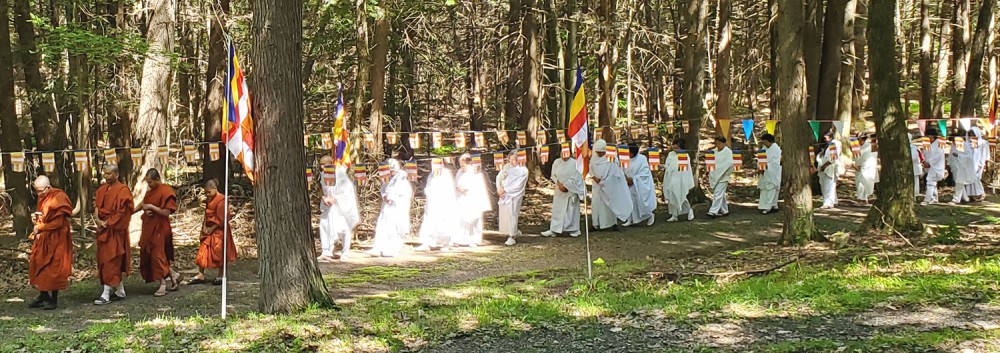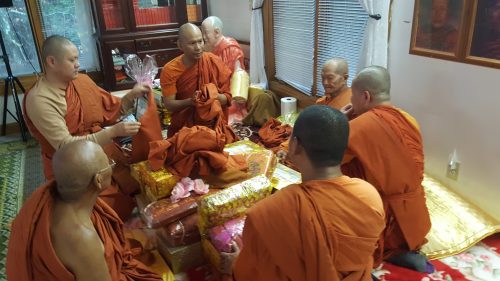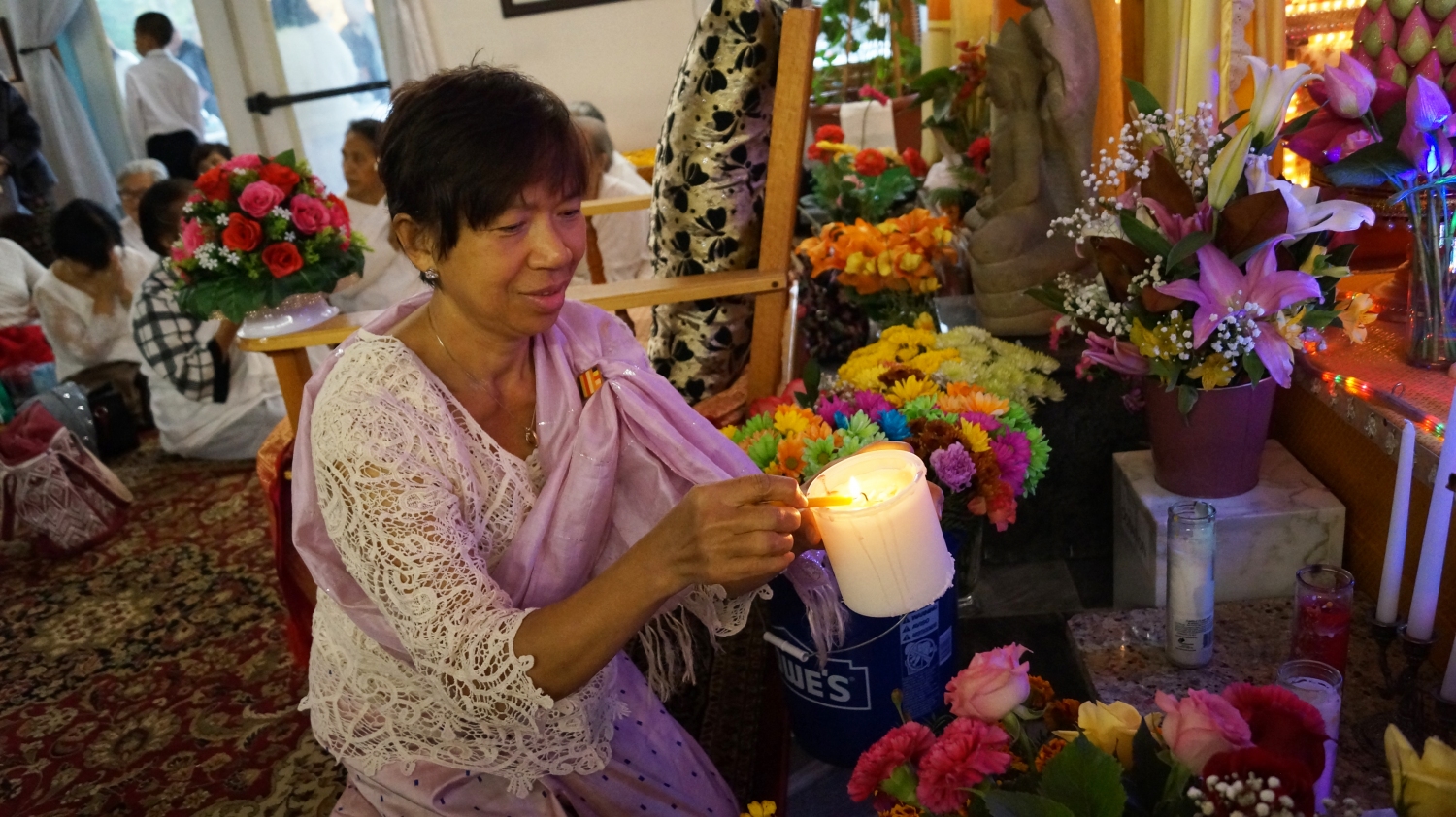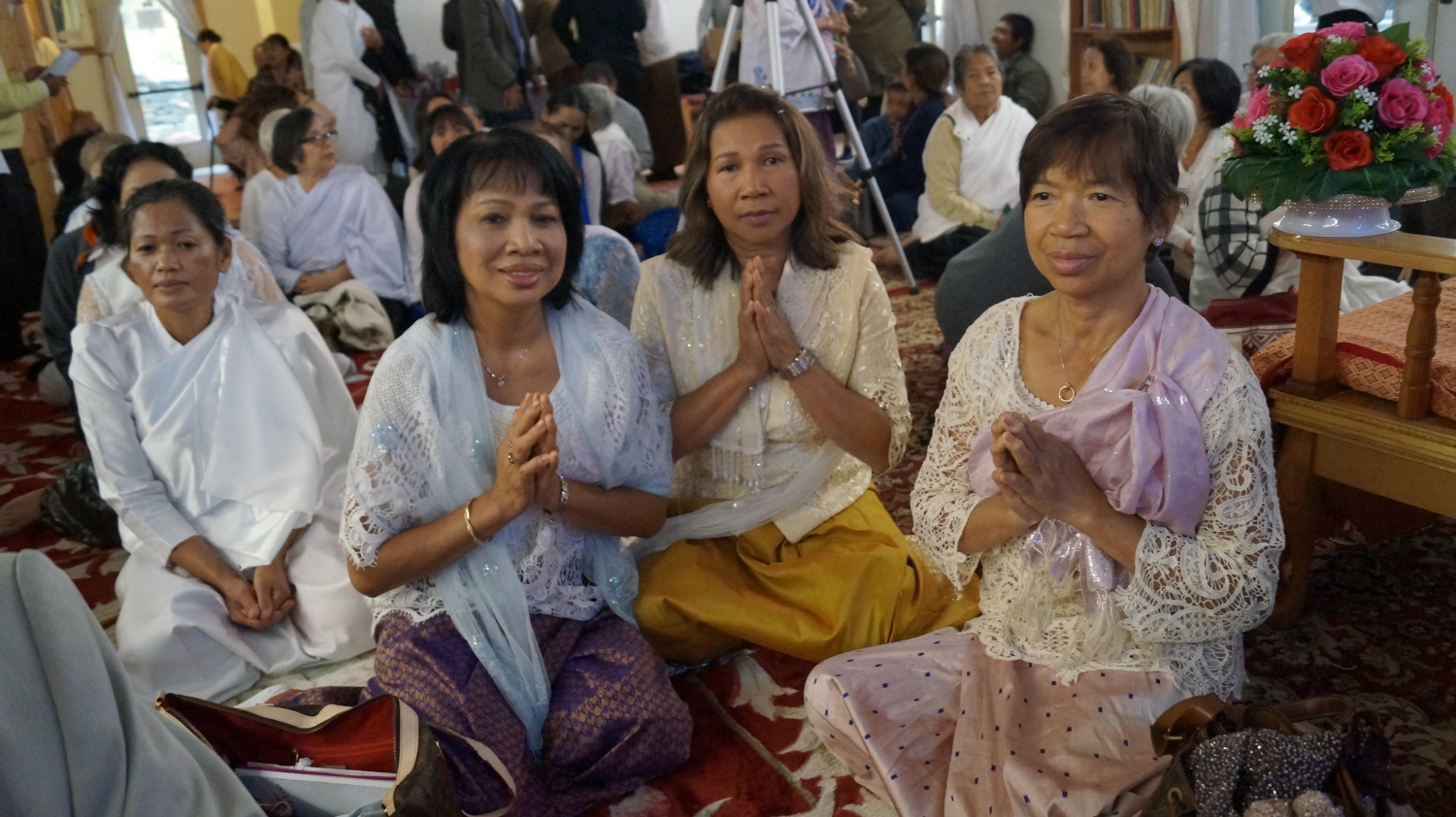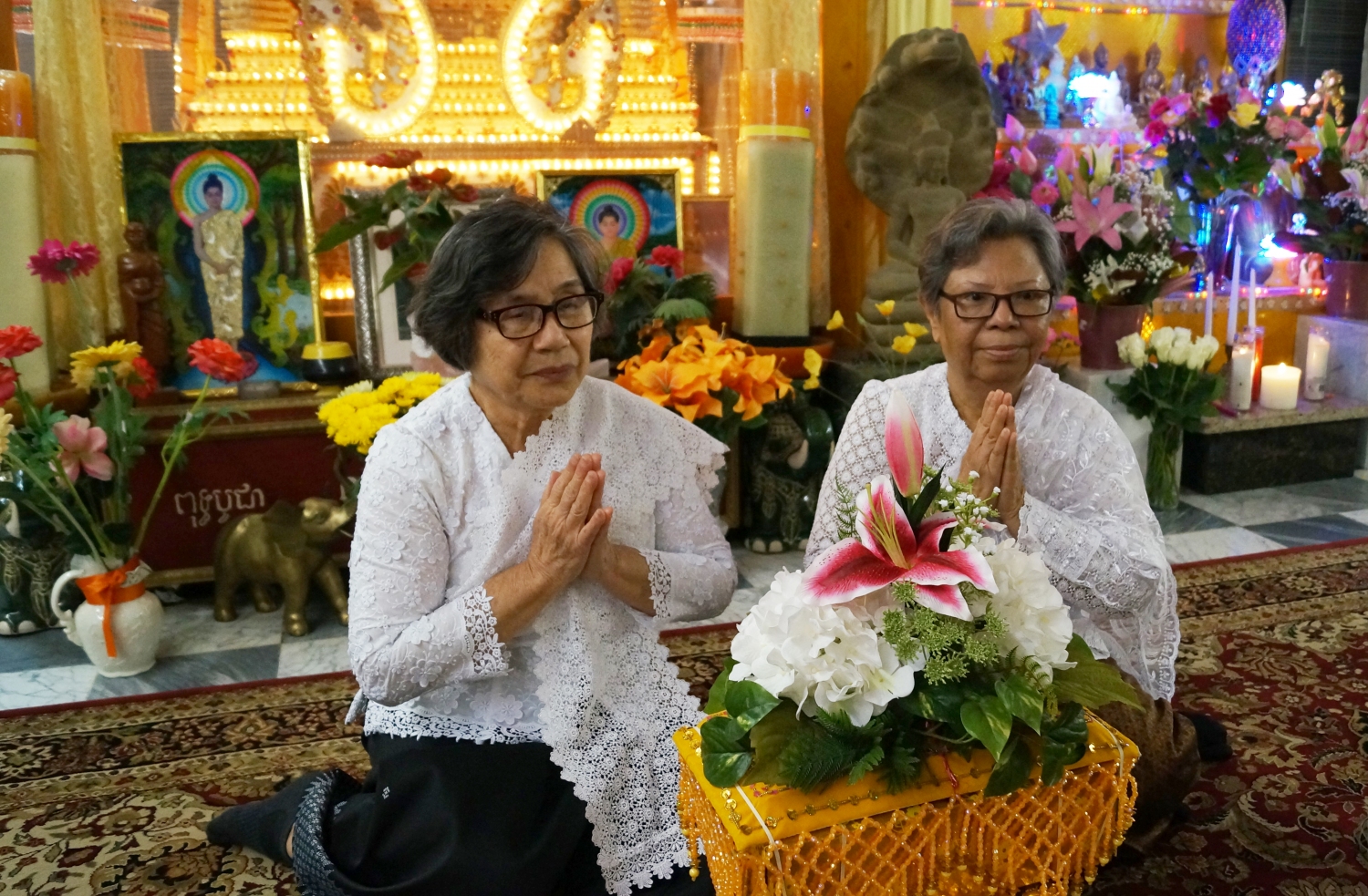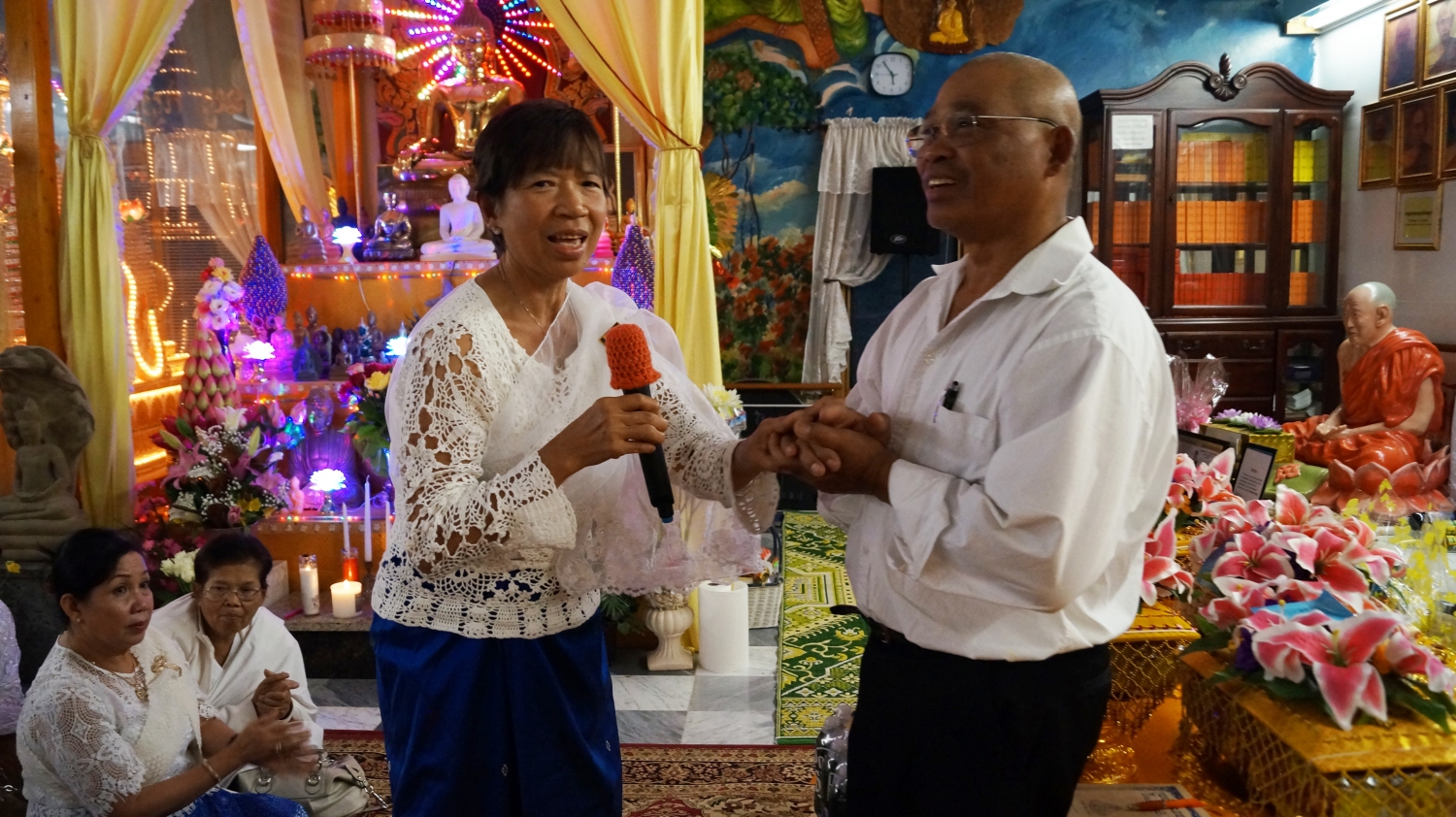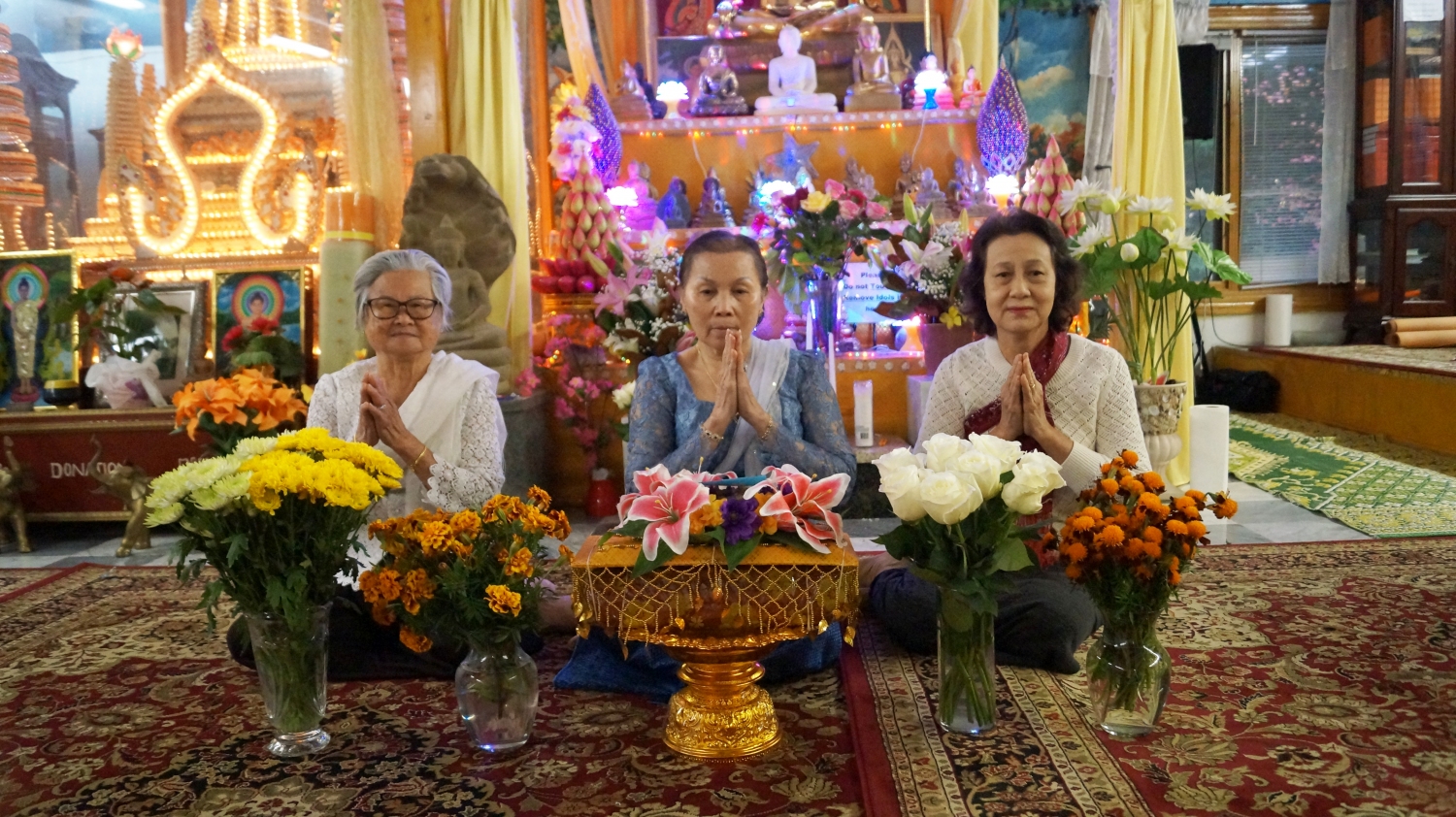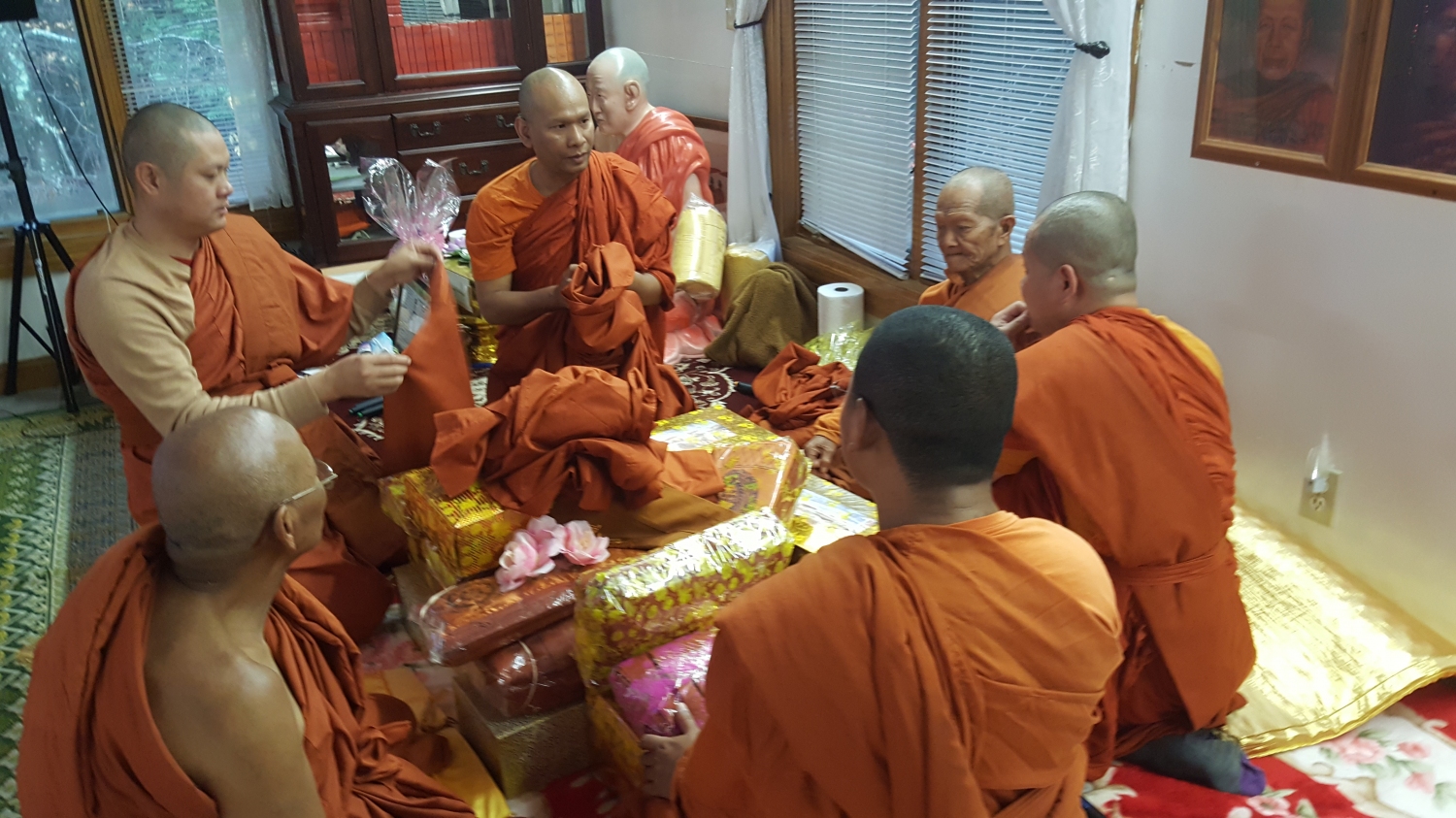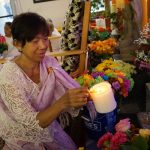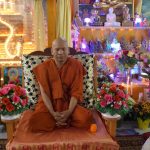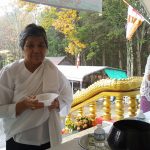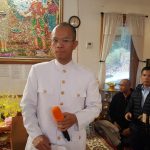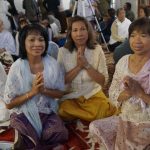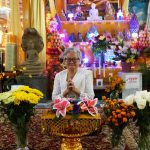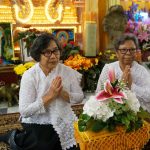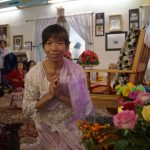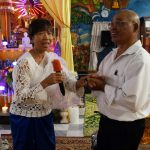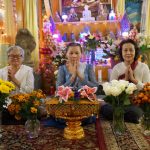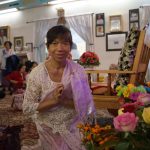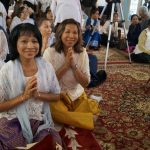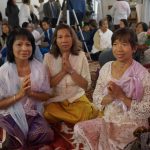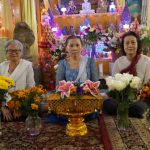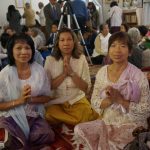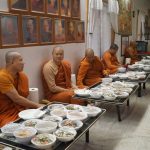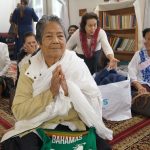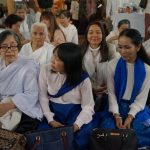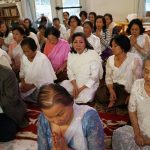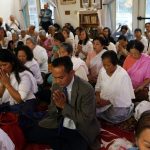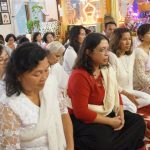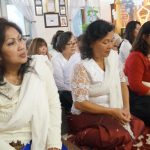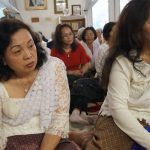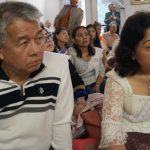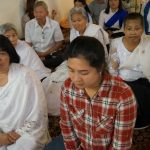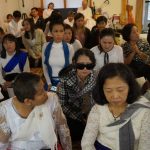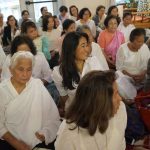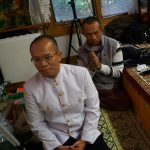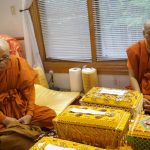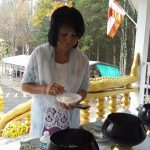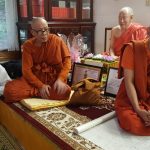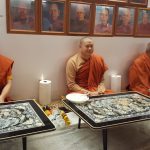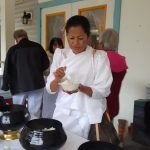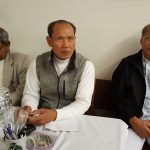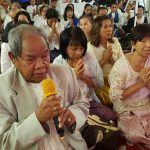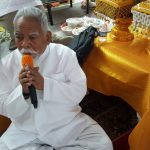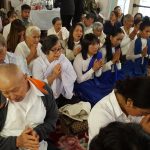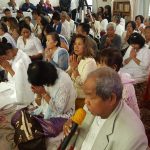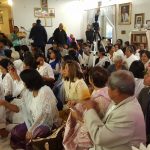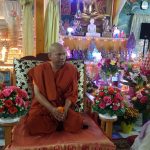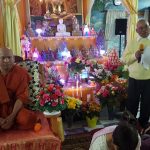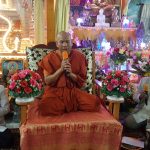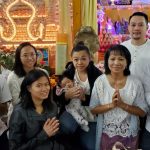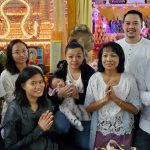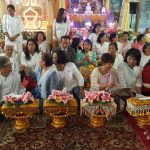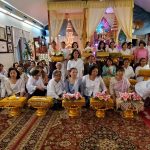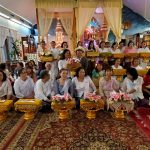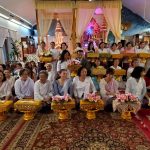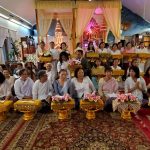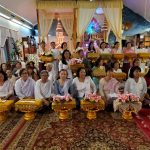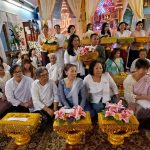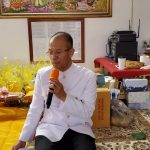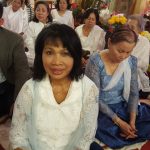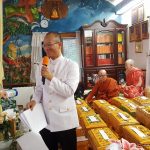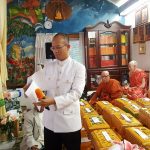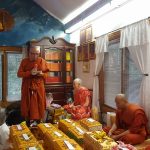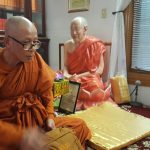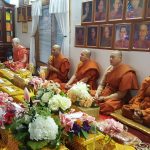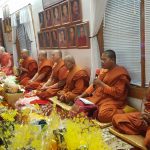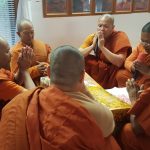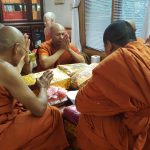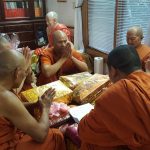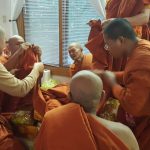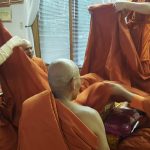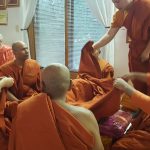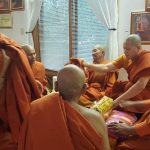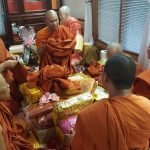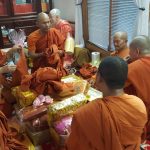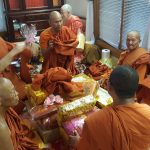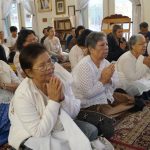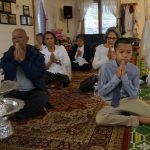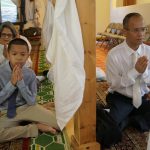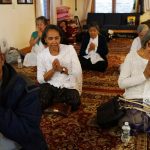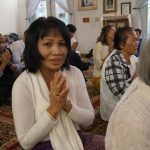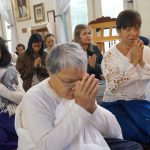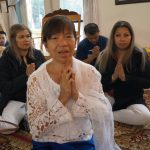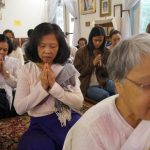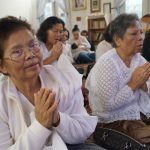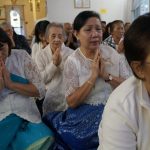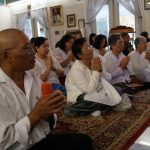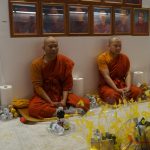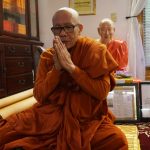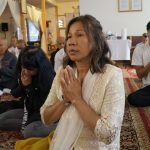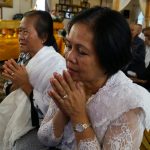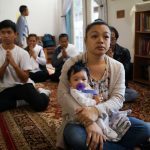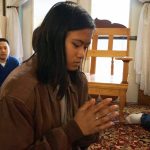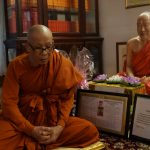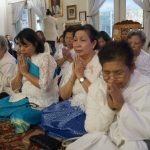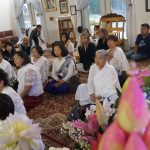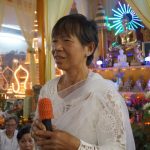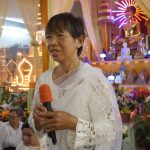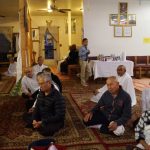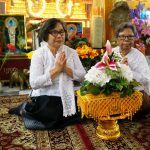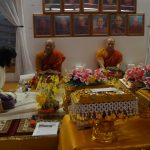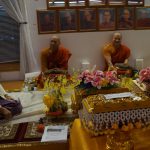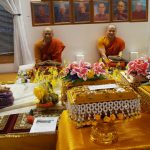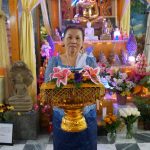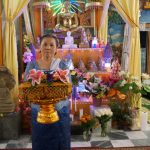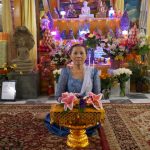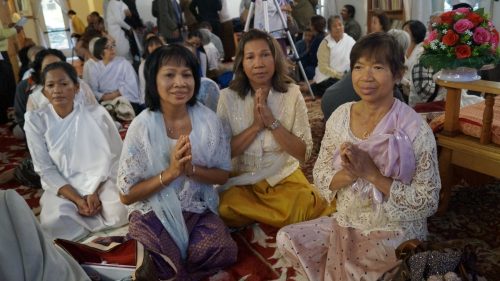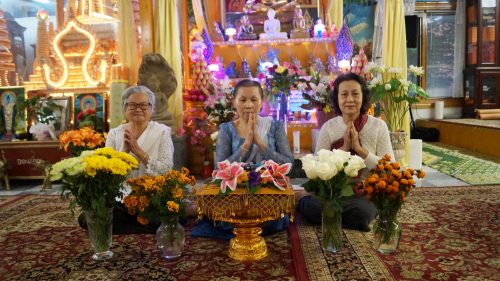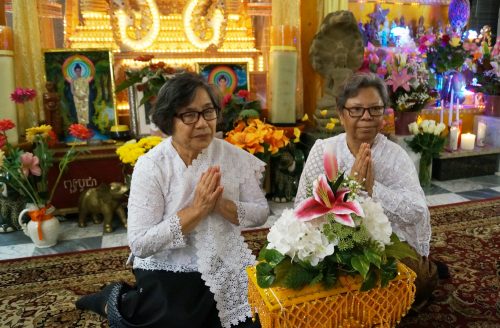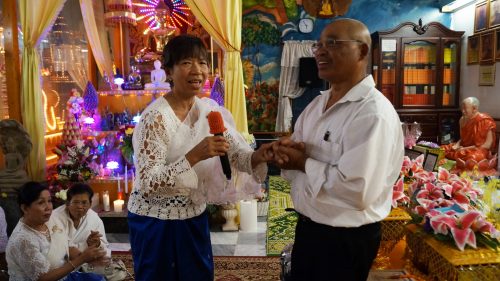ខ្លោងទ្វារថ្មីរបស់វត្ដគិរីវង្សាបុប្ផារាម អាស្រមសមាធិសន្ដិភាពធ្វើរួចរាល់ហើយ
ខ្លោងទ្វារថ្មីរបស់វត្ដគិរីវង្សាបុប្ផារាម អាស្រមសមាធិសន្ដិភាពធ្វើរួចរាល់ហើយ
New Gate of Wat Kiryvongsa Bopharam, the Peace Meditation Center completed.
ថ្ងៃចន្ទ ៣រោច ខែជេស្ឋ ឆ្នាំជូត ទោស័ក ព.ស.២៥៦៤ ត្រូវនឹងថ្ងៃទី៨ ខែមិថុនា គ.ស.២០២០
Monday the 3rd Waxing Moon of Jeṭṭha B.E.2564 equivalent to June 8, A.D.2020 Year of the Rat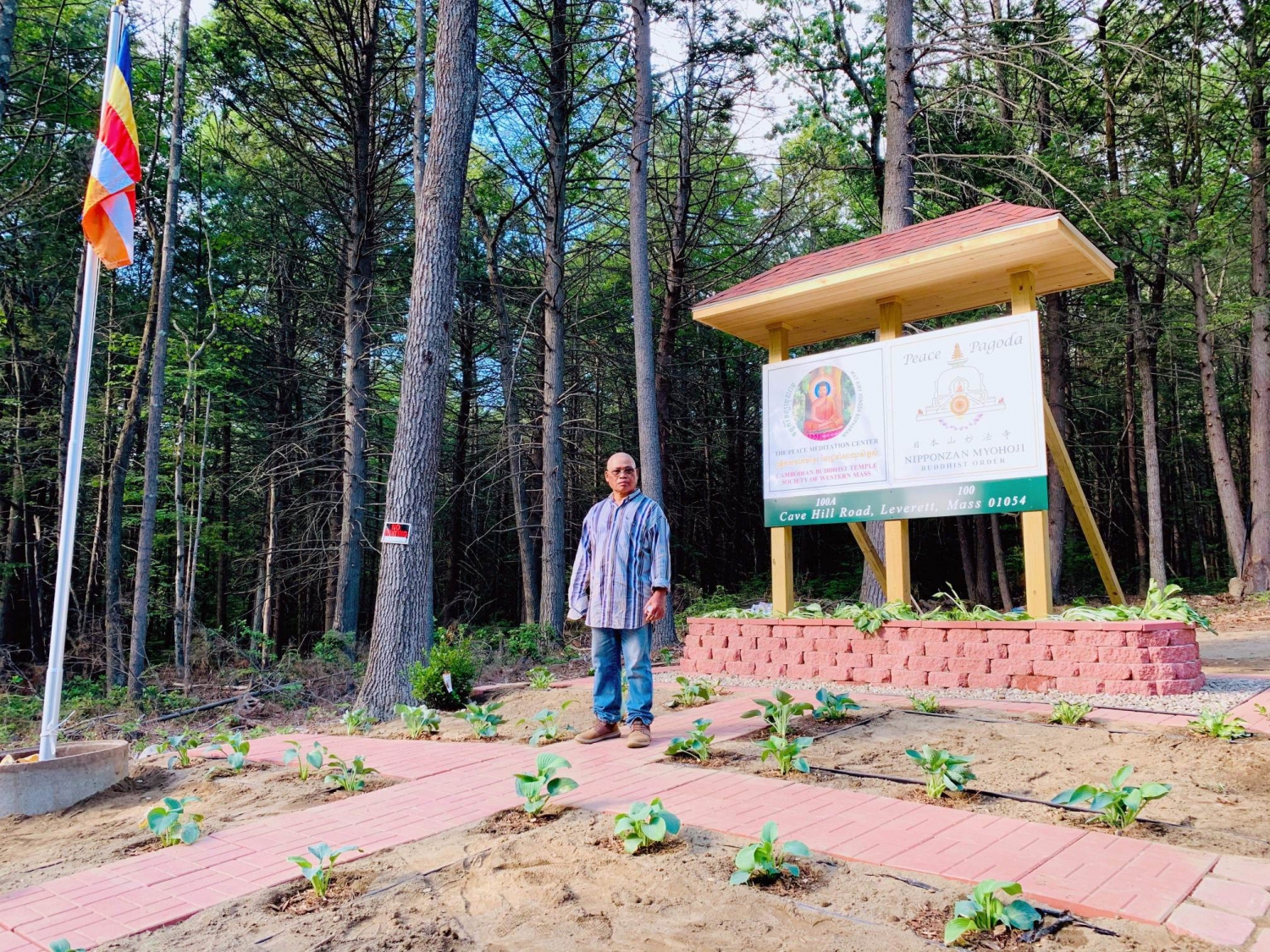
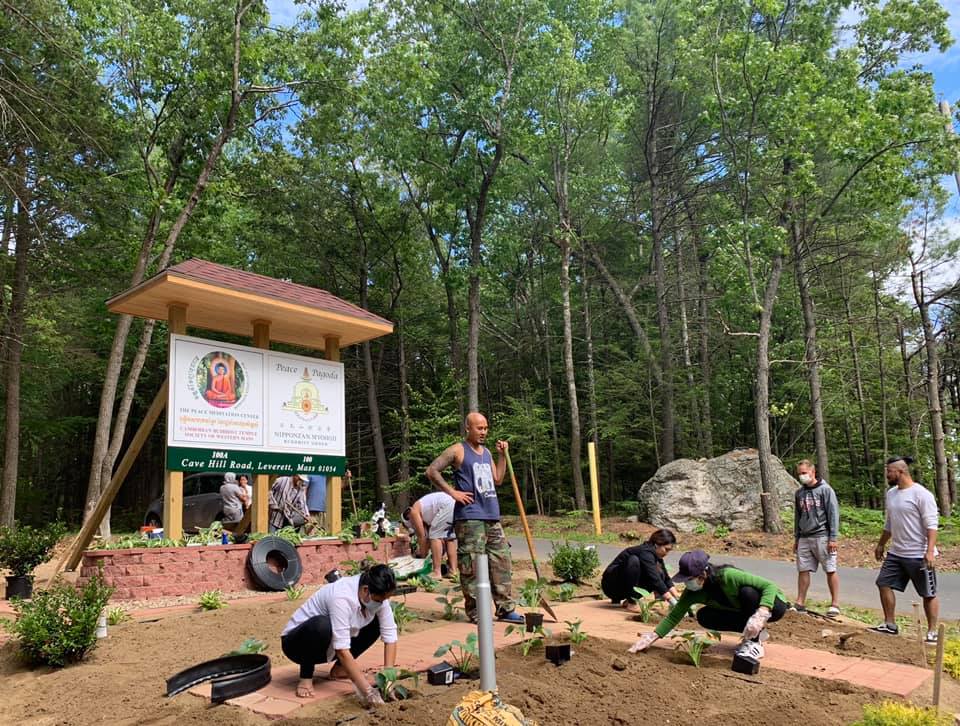
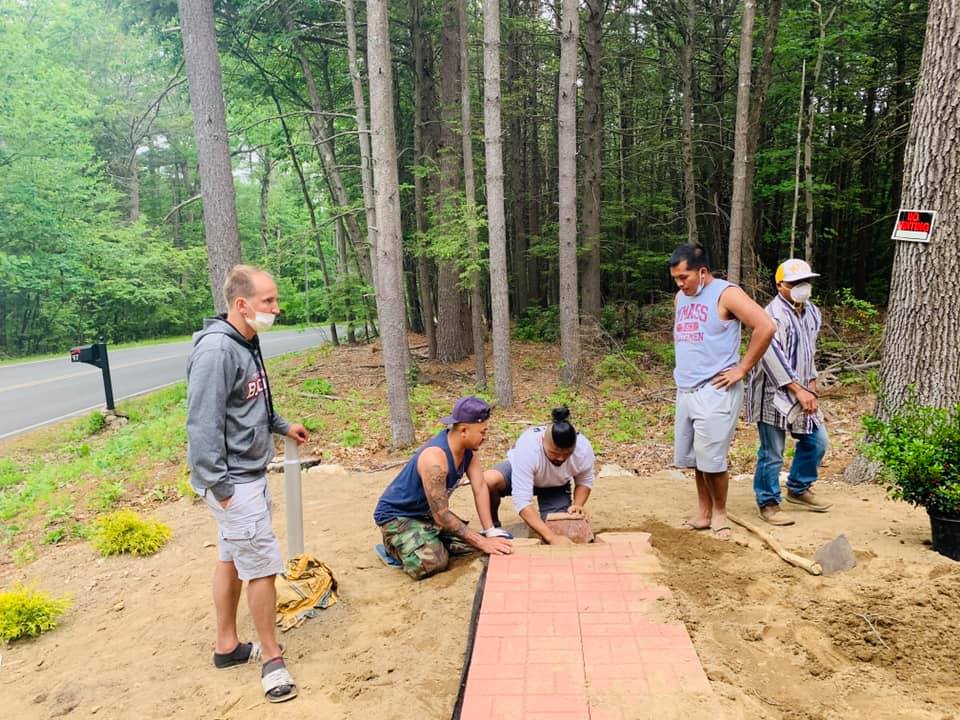
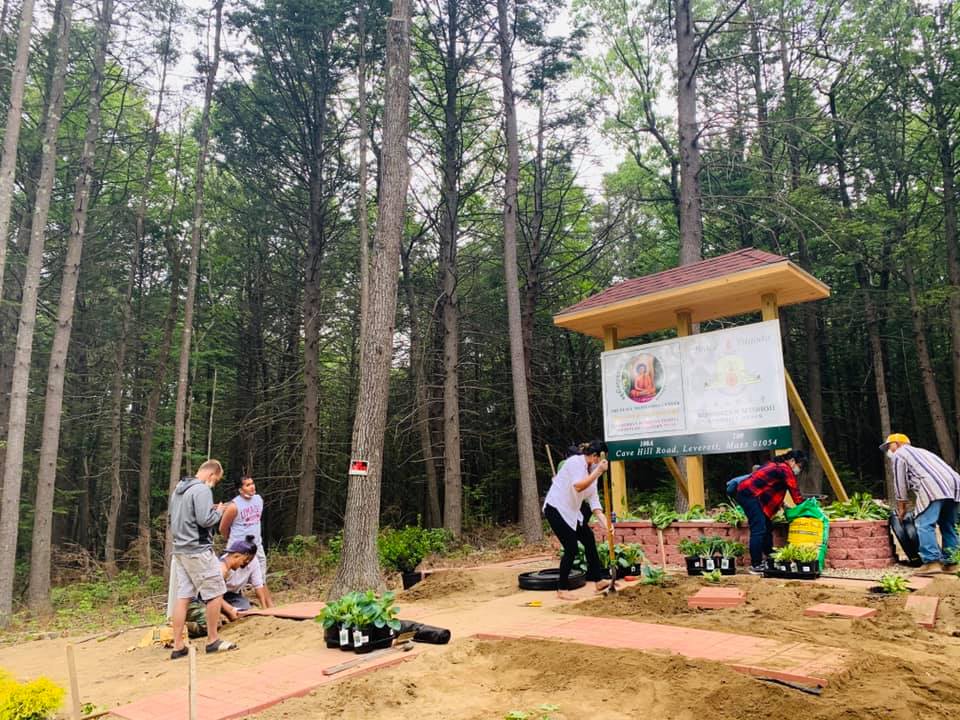
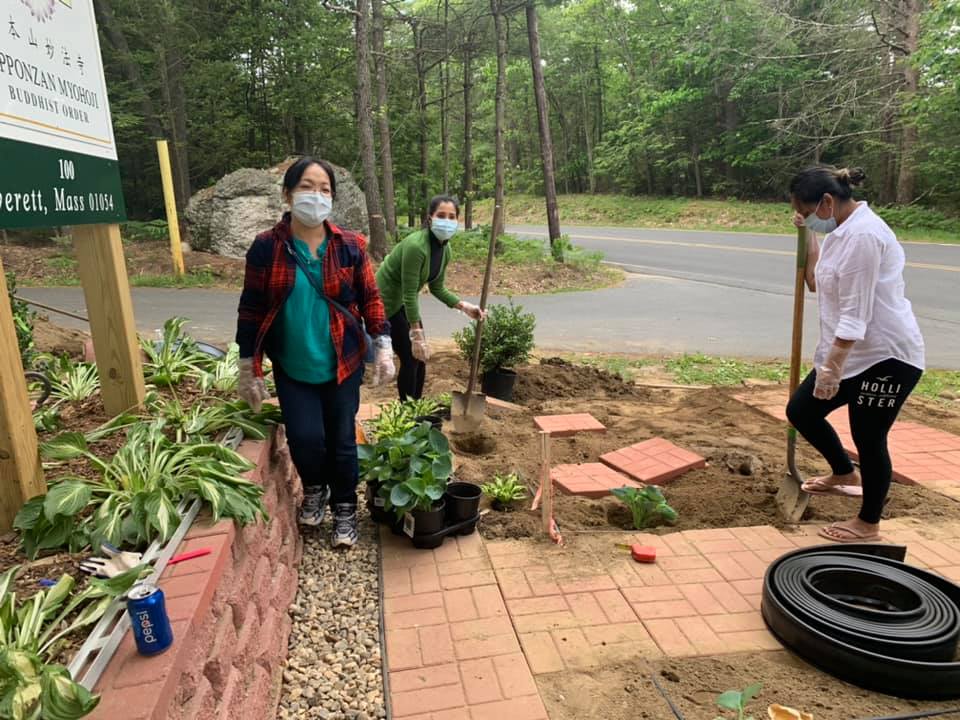
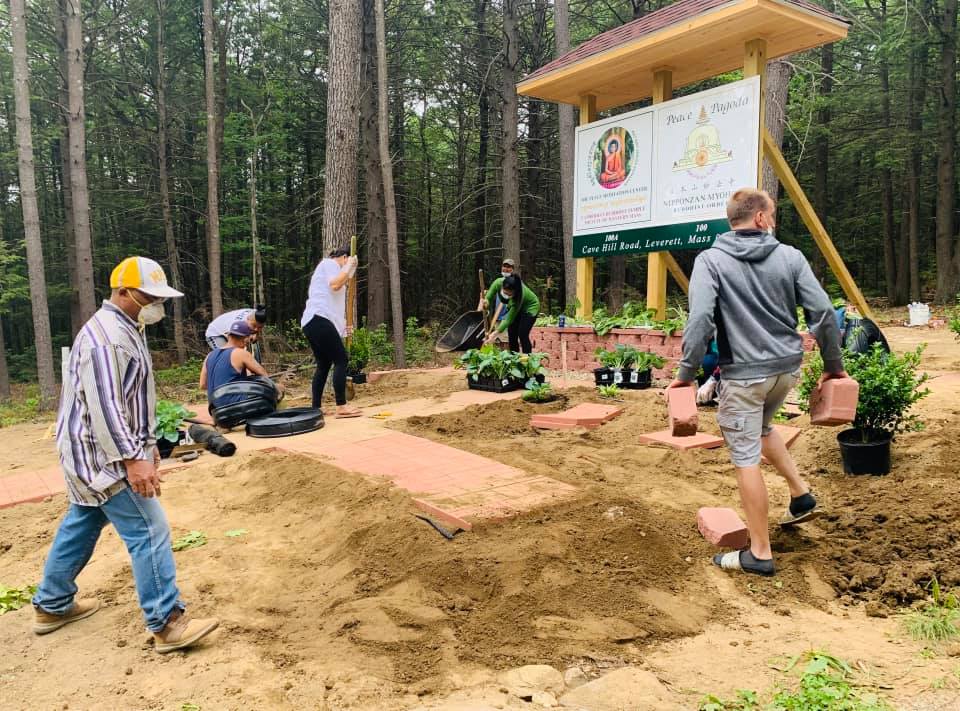
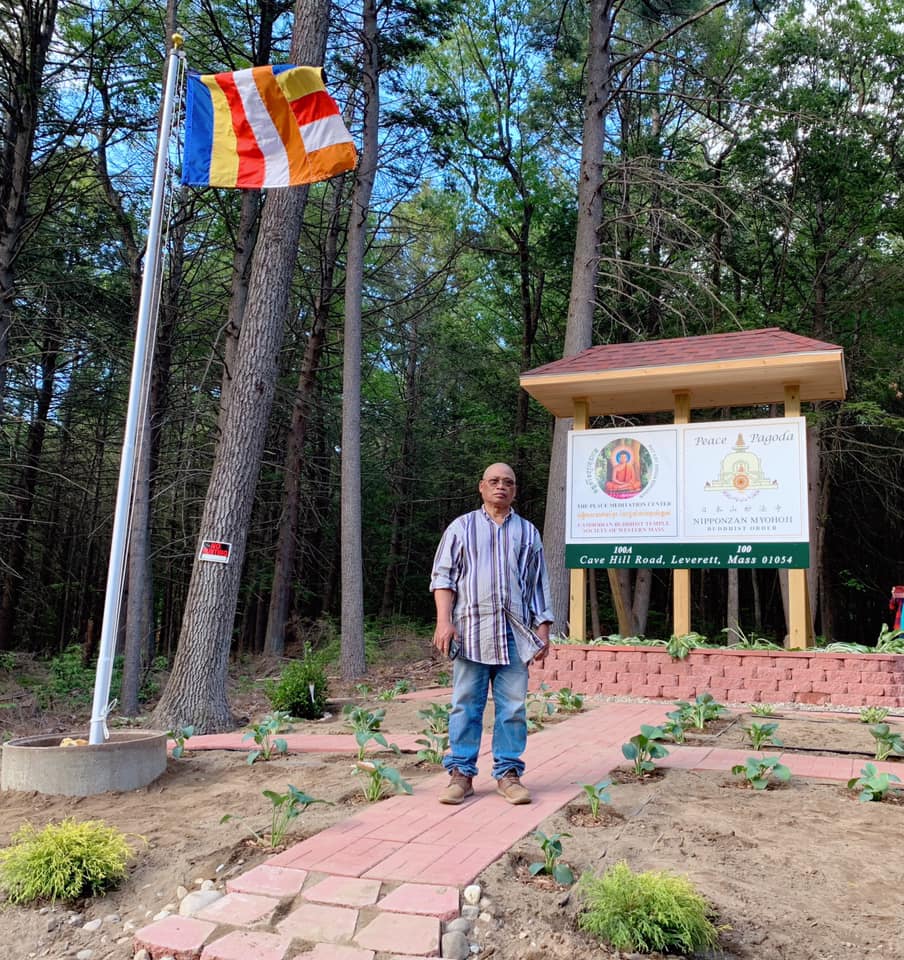
ខ្លោងទ្វារថ្មីរបស់វត្ដគិរីវង្សាបុប្ផារាម អាស្រមសមាធិសន្ដិភាព
ខ្លោងទ្វារថ្មីរបស់វត្ដគិរីវង្សាបុប្ផារាម អាស្រមសមាធិសន្ដិភាព
New Gate of Wat Kiryvongsa Bopharam, the Peace Meditation Center
New Gate of Wat Kiryvongsa Bopharam, the Peace Meditation Center
ខ្លោងទ្វារថ្មីរបស់វត្ដគិរីវង្សាបុប្ផារាម អាស្រមសមាធិសន្ដិភាព
ថ្ងៃចន្ទ ១១កើត ខែជេស្ឋ ឆ្នាំជូត ទោស័ក ព.ស.២៥៦៤ ត្រូវនឹងថ្ងៃទី១ ខែមិថុនា គ.ស.២០២០
Monday the 11th Waxing Moon of Jeṭṭha B.E.2564 equivalent to June 1, A.D.2020 Year of the Rat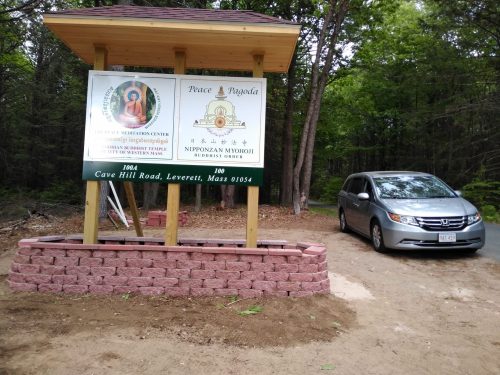
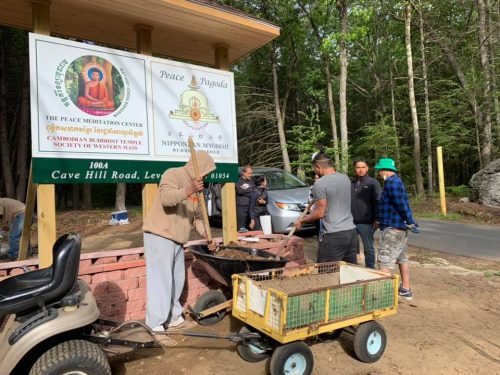
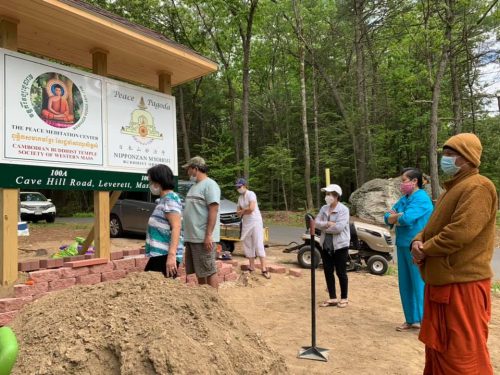
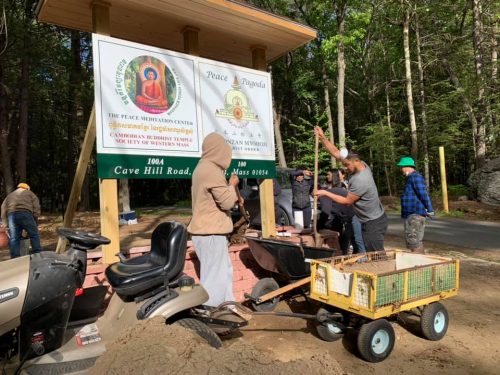
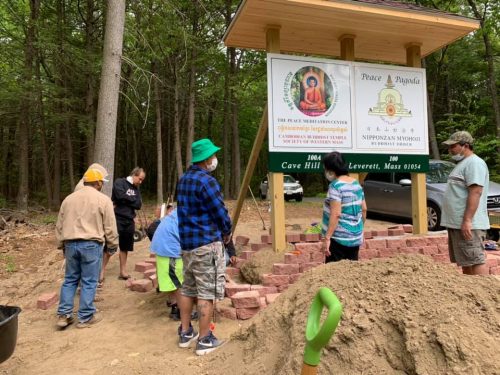
ប្រវត្តិឆដ្ឋសង្គាយនា
ប្រវត្តិឆដ្ឋសង្គាយនា (លើកទី ៦) ដ៏មហាអស្ចារ្យនេះ
History of the Chaṭṭha Saṅgāyana, The Sixth Great International Buddhist Council
ថ្ងៃចន្ទ ៤កើត ខែជេស្ឋ ឆ្នាំជូត ទោស័ក ព.ស.២៥៦៤ ត្រូវនឹងថ្ងៃទី២៥ ខែឧសភា គ.ស.២០២០
Monday the 4th Waxing Moon of Jeṭṭha B.E.2564 equivalent to May 25, A.D.2020 Year of the Rat
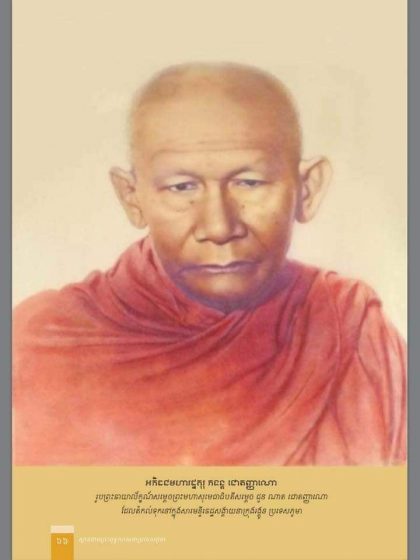
សង្គាយនា គឺជាឈ្មោះនៃកិច្ចប្រជុំរបស់ព្រះភិក្ខុសង្ឃក្នុងព្រះពុទ្ធសាសនា ដើម្បីផ្ទៀងផ្ទាត់ធម៌វិន័យដែលជាពាក្យប្រៀនប្រដៅរបស់ព្រះពុទ្ធអង្គ ទុកស្មើនឹងព្រះសម្មាសម្ពុទ្ធផ្ទាល់ព្រះអង្គ គង់នៅដូចជា ព្រះពុទ្ធដីកាថា
យោ វោ អានន្ទ មយា ធម្មោ ច វិនយោ ច ទេសិតោ បញ្ញត្តោ សោ វោ សត្ថា
ម្នាលអានន្ទ ធម៌វិន័យឯណា ដែលព្រះតថាគត បានសម្តែងហើយនឹងបញ្ញត្តហើយ ដល់អ្នកទាំងឡាយ ធម្មវិន័យនោះ នឹងជាគ្រូរបស់អ្នកទាំងឡាយ ដោយកាលជាអំណឹះតទៅនៃតថាគត ។
ដោយរយៈកាលជាអំណឹះទៅនៃព្រះពុទ្ធបរមគ្រូ មានបញ្ហាចម្រូងចម្រាសកើតឡើងចំពោះធម្មវិន័យ ក្នុងពុទ្ធសាសនមណ្ឌល ទើបព្រះមហាថេរៈទាំងឡាយ ជាគណាចារ្យបានរៀបចំជាសង្គាយនាឡើង ដើម្បីផ្ទៀងផ្ទាត់នឹងរក្សាឱ្យបាននូវទម្រង់ដើមនៃព្រះពុទ្ធវចនៈ ដែលជាពាក្យរបស់ព្រះពុទ្ធសុទ្ធៗ ដើម្បីជាប្រយោជន៍ ដើម្បីសេចក្តីសុខដល់ជនច្រើនអស់កាលជាយូរអង្វែងតទៅ ។
ឆដ្ឋសង្គាយនា លើកទី ៦នេះ ប្រារព្ធឡើងនៅព.ស.២៤៩៨ឆ្នាំ ក្រោយព្រះពុទ្ធបរិនិព្វាន ទីតាំង ល្អាងភ្នំសិប្បនិម្មិត មហាបាសាណាគុហា (Mahapasana Cave) ក្រុងយុាំងហ្គូន ប្រទេសភូមា ទំនុកបម្រុងដោយរដ្ឋាភិបាលភូមា ដឹកនាំដោយព្រះរេវតមហាថេរៈ ភទន្តសោភណៈ ជាបុច្ឆកៈ និង ព្រះតិបិដកធរធម្មភណ្ឌាគារិកវិចិត្តសារាភិវំសៈ ជាវិសជ្ជកៈ មានព្រះភិក្ខុសង្ឃ ២.៥០០អង្គ ដោយចូលរួមមានប្រតិភូសង្ឃមកពីបណ្តាប្រទេសកាន់ព្រះពុទ្ធសាសនាថេរវាទដូចគ្នា មាន៖ ភូមា កម្ពុជា សៀម លាវ ស្រីលង្កា និងបណ្តាប្រទេសផ្សេងៗទៀត ចូលរួមផងដែរ ។ ប្រារព្ធឡើងរយៈពេល ២ឆ្នាំ មូលហេតុ ដើម្បីផ្ទៀងផ្ទាត់ធម្មវិន័យ និងចងក្រងព្រះពុទ្ធវចនៈ ពោលគឺព្រះត្រៃបិដក ព្រមទាំងអដ្ឋកថា ដីកា យោជនា និងគន្ថៈផ្សេងៗ មានគម្ពីរវេយ្យាករណ៍ ជាដើម បានជាឯកសាររួមរបស់ព្រះពុទ្ធសាសនាថេរវាទ ។
• ព្រះអគ្គមហាបណ្ឌិត ភទន្តៈ សោភណៈ (មហាសីស្យាដ័រ) ជាបុច្ឆកត្ថេរ (អ្នកសួរ) ព្រះមហាថេរៈអង្គនេះ ប្រជាជនភូមាជឿជាក់ថា ជាព្រះអនាគាមិបុគ្គល។
• ព្រះតិដកធរធម្មភណ្ឌាគារិកៈ ភទន្តៈ វិចិត្តសារាភិវំសៈ ជាវិសជ្ជកៈ (អ្នកឆ្លើយ) ព្រះមហាថេរៈអង្គនេះ ចេះចាំព្រះត្រៃបិដកទាំងបីសូត្រមាត់ទទេបានសព្វគ្រប់។
ទីតាំងធ្វើសង្គាយនា និងទីស្នាក់នៅរបស់ព្រះភិក្ខុសង្ឃ មហាបាសាណាគុហា ជាភ្នំសិប្បនិម្មិតតូចល្មមមួយ មានបណ្តោយប្រវែង ៤៥៤ហត្ថ និងទទឹង ៣៧០ហត្ថ មានរូងភ្នំ នៅខាងក្នុង ដែលមានបណ្តោយប្រវែង ២២០ ហត្ថ ទទឹង ១៤០ហត្ថ មានទ្វារធំៗ ៦ និងប្រហោង ៣ខាងលើ ច្រកចូលទ្វារធំ តំណាងព្រះរតនត្រ័យ និងជុំវិញ មានប្រហោង ២៤ទៀត ជាបង្អួចតំណាងបច្ច័យទាំង ២៤ ក្នុងគម្ពីរមហាដ្ឋាន (អភិធម្ម) ដែលចំណាយលើថ្លៃកសាងអស់ ៩២សែនរូពី។ ឯកន្លែងស្នាក់អាស្រ័យរបស់ព្រះភិក្ខុសង្ឃវិញ ក៏ស្ថិតក្នុងទីមិនឆ្ងាយដែរ ដោយគេសង់ជាមហាកុដិធំៗ ដាក់ឈ្មោះទៅតាមទិសទាំង ៤ គឺ៖ បុព្វវិទេហទ្វីប ជម្ពូទី្វប អមរគោយានទ្វីប និងឧត្តរកុរុទ្វីប និងកុដិនីមួយៗ មានបណ្តោយ ១១០ម៉ែត្រ ទទឹង ១៨ម៉ែត្រ ហើយមាន ៣ជាន់ ។ ជាន់ក្រោមត្រូវបានបែងចែកជាបន្ទប់ធំៗ សម្រាប់ធ្វើបន្ទប់រៀនសាលាធម្មទូត ។ ជាន់កណ្តាល និងជាន់លើ បែងចែកជាបន្ទប់តូចល្មម ដើម្បីស្នាក់នៅ ៦០បន្ទប់។ គ្រប់ជាន់ទាំង ៣ សុទ្ធតែមានបង្គន់ បន្ទប់ទឹកងូត និងកន្លែងលុបលាងមុខ នៅខាងចុងៗនៃបណ្តោយអគារ ។ ក្រៅពីសំណង់ធំៗទាំង ៤នេះ មានសាលាភត្ត ៣ជាន់មួយខ្នងទៀត ដែលមានបណ្តោយ ៨០ម៉ែត្រ ទទឹង ៥០ម៉ែត្រ និងមានទីធ្លាខាងមុខធំទូលាយ។ ការកសាងសំណង់ទី ៥នេះ ចំណាយអស់ថវិកា ១២លាន ២សែនរូពី សរុបទាំងថ្លៃកសាងមហាបាសាណាគុហាផង ១២លាន ៩៣ សែនរូពី។ ចំពោះការស្នាក់នៅវិញ ព្រះមហាថេរៈ គង់នៅមួយបន្ទប់ ១អង្គឯង ឯភិក្ខុទូទៅគង់នៅ ២អង្គក្នុងមួយបន្ទប់ និងមានក្អមទឹកនិងផ្ទិលទឹកតម្តល់ទុកស្រេចហើយ សម្រាប់ប្រើប្រាស់ ព្រមទាំងមានអ្នកបម្រើនៅចាំបម្រើជានិច្ចទៀតផង ។
ព្រះសង្ឃនិងគណៈកម្មការវត្ដកំពុងធ្វើការ
ព្រះសង្ឃនិងគណៈកម្មការវត្ដកំពុងធ្វើការ
The Buddhist monks and Temple Board members at work
ថ្ងៃចន្ទ ៤កើត ខែជេស្ឋ ឆ្នាំជូត ទោស័ក ព.ស.២៥៦៤ ត្រូវនឹងថ្ងៃទី២៥ ខែឧសភា គ.ស.២០២០
Monday the 4th Waxing Moon of Jeṭṭha B.E.2564 equivalent to May 25, A.D.2020 Year of the Rat
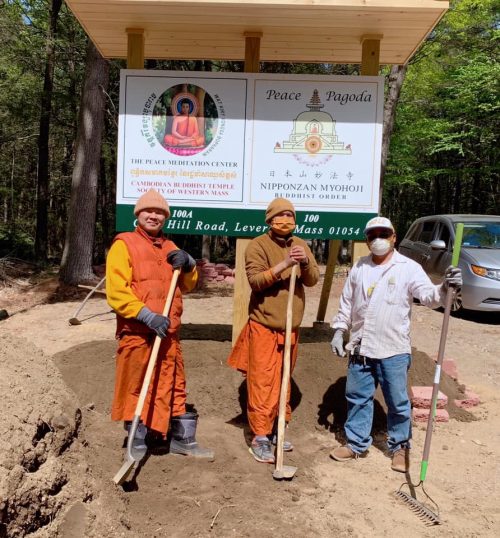
Khmer, Pali Words, Vocabularies When Converse Among, with and toward the Buddhist monks
ពាក្យជាភាសាខ្មែរ និង បាលី សម្រាប់ព្រះភិក្ខុសង្ឃ និង គ្រហស្ថ សន្ទនាជាមួយ និង ចំពោះព្រះសង្ឃ
Khmer and Pali words, vocabularies when Buddhist monks and laypeople converse among, with and toward the Buddhist monks
ថ្ងៃអាទិត្យ ១១រោច ខែពិសាខ ឆ្នាំជូត ទោស័ក ព.ស.២៥៦៤ ត្រូវនឹងថ្ងៃទី១៧ ខែឧសភា គ.ស.២០២០
Sunday the 11th Waning Moon of Visakha B.E.2564 equivalent to May 17, A.D.2020 Year of the Rat
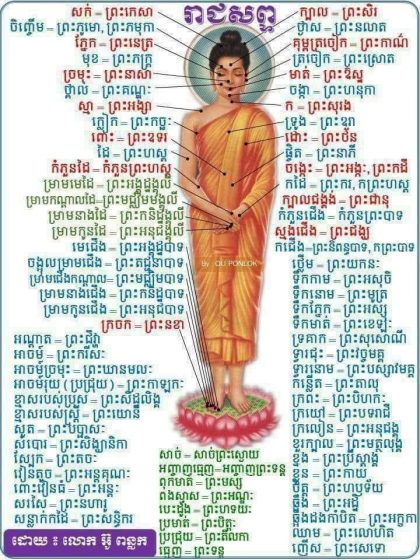
ក្លិននៃពួកសប្បុរសទាំងឡាយក្រអូបច្រាសខ្យល់បាន
ន បុប្ផគន្ធោ បដិវាតមេតិ ន ចន្ទនំ តគរមល្លិកា វា សតញ្ច គន្ធោ បដិវាតមេតិ សព្វា ទិសា សប្បុរិសោ បវាយតិ៕
Fragrance of Virtue Blows Everywhere
ថ្ងៃព្រហស្បតិ៍ ៨រោច ថ្ងៃសីល ខែពិសាខ ឆ្នាំជូត ទោស័ក ព.ស.២៥៦៤ ត្រូវនឹងថ្ងៃទី១៤ ខែឧសភា គ.ស.២០២០
Thursday the 8th Waning Moon of Visakha B.E.2564 equivalent to May 14, A.D.2020 Year of the Rat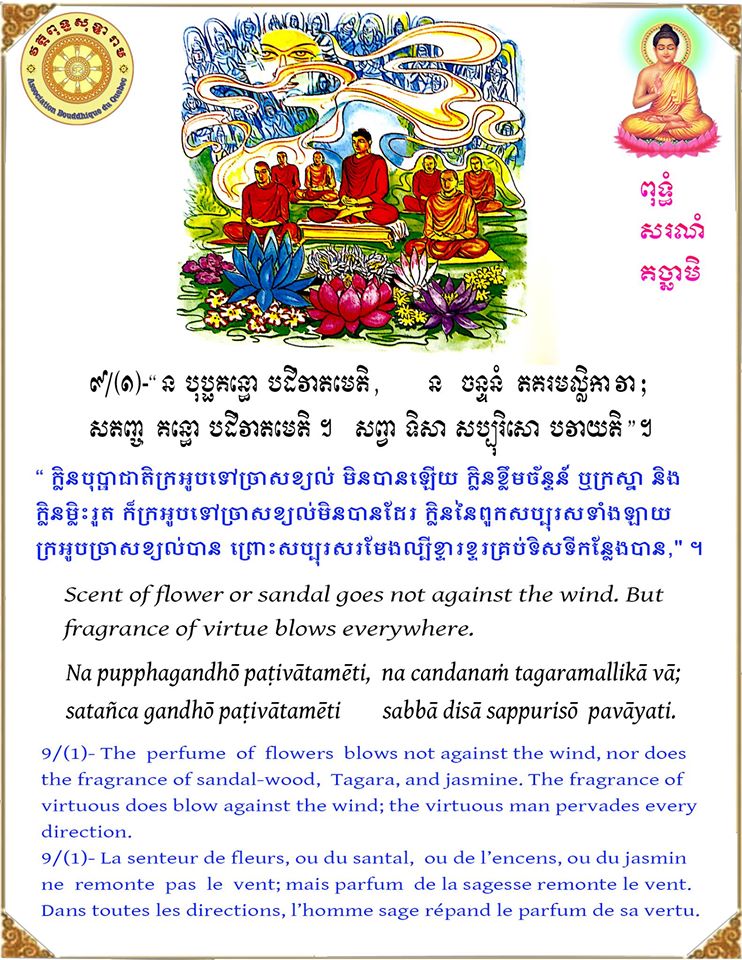
Press Release on the Cancellation of the June Meditation Retreats
សេចក្ដីប្រកាសព័ត៌មាន ស្ដីពី ការលុបចោលនូវការបើកវគ្គរៀនសមាធិកម្មដ្ឋាន ដោយសារជំងឺរាតត្បាតខូវីត១៩
English PDF: Press ReleaseEN || Khmer PDF: Press Release
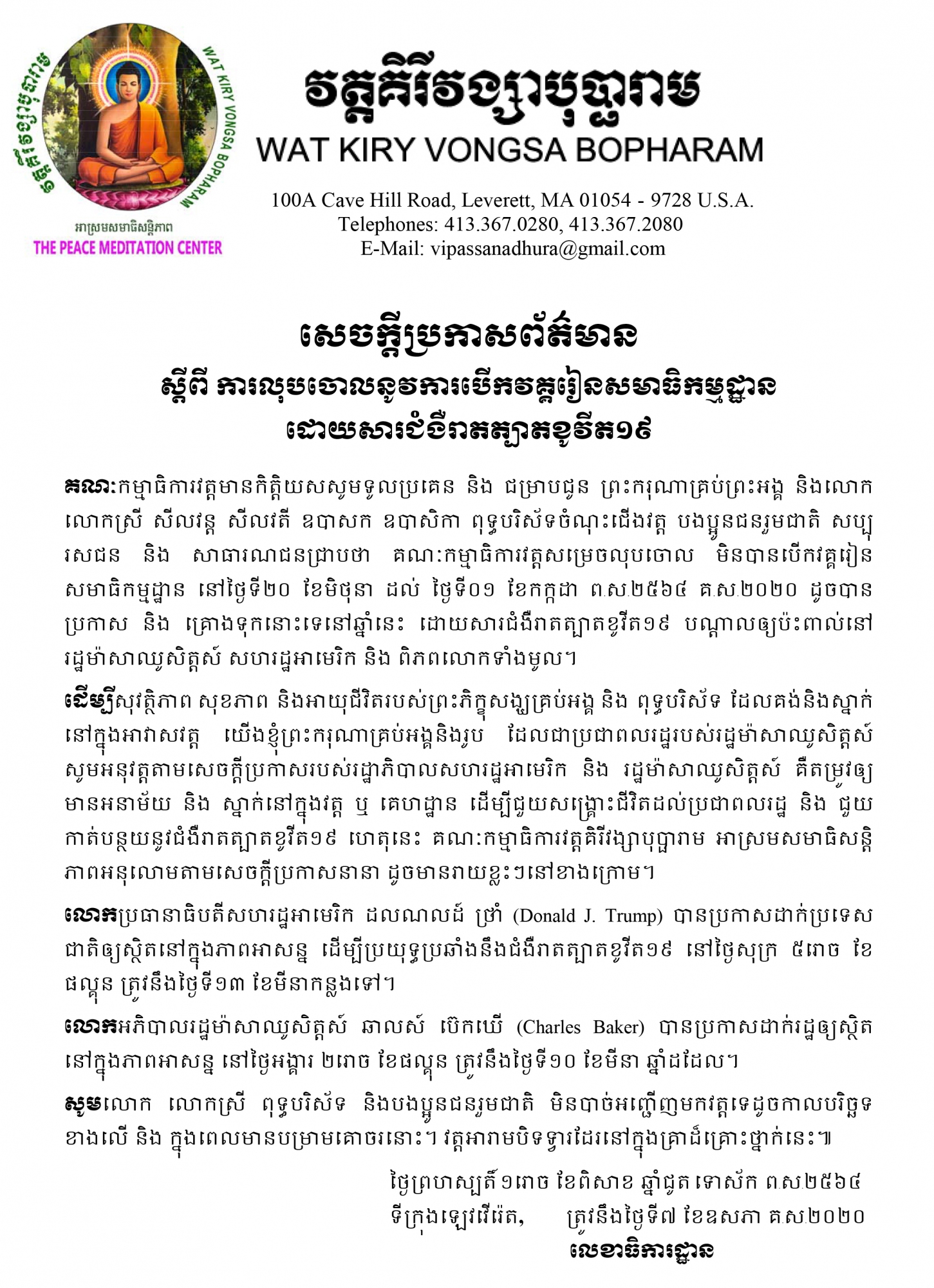
សម្ដេចព្រះសង្ឃរាជ ជោតញ្ញាណោ ជួន ណាត ទ្រង់ពន្យល់អំពីមិច្ឆាសង្កប្ប (តម្រិះខុស) និង សម្មាសង្កប្ប (តម្រិះត្រូវ)
សម្ដេចព្រះសង្ឃរាជ ជោតញ្ញាណោ ជួន ណាត ទ្រង់ពន្យល់អំពីមិច្ឆាសង្កប្ប (តម្រិះខុស) និង សម្មាសង្កប្ប (តម្រិះត្រូវ)
His Holiness Sangharaja Jotannano giving explations on Micchā Sankappa (Wrong Intention) and Samma Sankappa (Right Intention)
ថ្ងៃអាទិត្យ ៥កើត ខែពិសាខ ឆ្នាំជូត ទោស័ក ព.ស.២៥៦៣ ត្រូវនឹងថ្ងៃទី២៦ ខែមេសា គ.ស.២០២០
Sunday the 5th Waxing Moon of Visakha B.E.2563 equivalent to April 26, A.D.2020 Year of the Rat
សម្ដេចព្រះសង្ឃរាជ ជោតញ្ញាណោ ជួន ណាត ទ្រង់ពន្យល់អំពីមិច្ឆាសង្កប្ប (តម្រិះខុស) និង សម្មាសង្កប្ប (តម្រិះត្រូវ)
Micchā Sankappa (Wrong Intention.) and Samma Sankappa (Right Intention)
Micchā Magga: Atthangika: the ‘8-fold wrong path’, is:1. Wrong view Micchā Ditthi, 2. Wrong Motivation Micchā Sankappa, 3. Wrong Speech Micchā Vvācā, 4. Wrong Bodily Action Micchā Kammanta, 5. Wrong Livelihood Micchā Ājīva, 6. Wrong Effort Micchā Vāyāma, 7. Wrong Awareness or Mindfulness Micchā Sati, 8. Wrong Concentration Micchā Samādhi
Samma Sankappa takes its name from the ancient Pali language, and translates as Right Intention or Right Resolve – one of the principle steps of The Noble Eightfold Path, from the Magga Vibhanga Sutta teachings taught by Buddha Shakyamuni – and of great importance to Buddhist practitioners.
Funeral Service of His Holiness Jotannano, Supreme Patriarch of Cambodia
ក្បួនដង្ហែព្រះបរមសពសម្ដេចព្រះសុមេធាធិបតី ជោតញ្ញាណោ ជួន ណាត សម្តេចព្រះសង្ឃរាជនៃព្រះរាជាណាចក្រកម្ពុជា
នៅក្នុងក្បួនដង្ហែនេះ យើងសង្កេតឃើញវត្តមានដ៏ខ្ពង់ខ្ពស់របស់លោកសេនាប្រមុខ លន់ នល់
Archive: Funeral Service of H.H. Jotannano Chuon Nath, Sangharaja of Supreme Buddhist Patriarch of Cambodia
វត្ដត្រលែងកែង ទីក្រុងលង្វែក ខេត្ដកំពង់ឆ្នាំង កម្ពុជា
វត្ដត្រលែងកែងលង្វែក ទីក្រុងលង្វែក ខេត្ដកំពង់ឆ្នាំង ប្រទេសកម្ពុជា
An aerial shot of Wat Tralaeng Kaeng Vihara, Longvek, Kampong Chhnang, Cambodia
ថ្ងៃចន្ទ ១៣រោច ថ្ងៃកោរ ខែចេត្រ ឆ្នាំជូត ទោស័ក ព.ស.២៥៦៣ ត្រូវនឹងថ្ងៃទី២០ ខែមេសា គ.ស.២០២០
Monday the 13th Waning Moon, Day of Head Shaving, Citta B.E.2563 equivalent to April 20, A.D.2020 Year of the Rat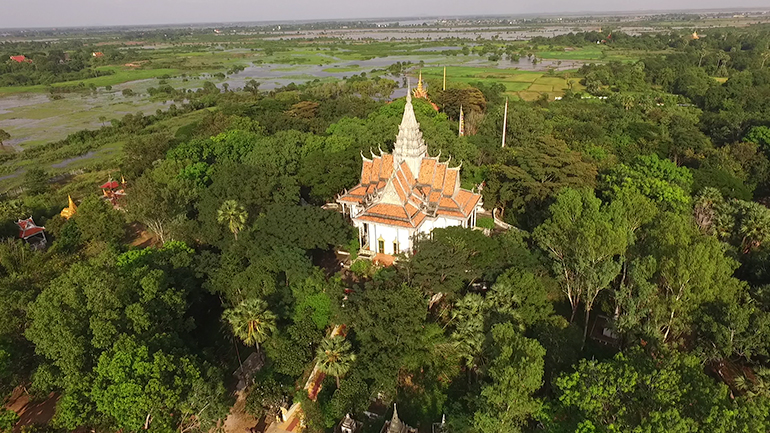
វត្ដត្រលែងកែងលង្វែក ទីក្រុងលង្វែក ខេត្ដកំពង់ឆ្នាំង កម្ពុជា An aerial shot of Wat Tralaeng Kaeng Vihara, Longvek, Kampong Chhnang, Cambodia
New Year Message from the Chief Monk of the Kiryvongsa Bopharam Pagoda
លិខិតប្រគេន និង ជូនពរឆ្នាំថ្មី របស់ព្រះចៅអធិការវត្ដគិរីវង្សាបុប្ផារាម
New Year Message from the Chief Monk of the Kiryvongsa Bopharam Pagoda
ថ្ងៃអង្គារ ៧រោច ខែចេត្រ ឆ្នាំជូត ទោស័ក ព.ស.២៥៦៣ ត្រូវនឹងថ្ងៃទី១៤ ខែមេសា គ.ស.២០២០
Tuesday the 7th Waning Moon of Citta B.E.2563 equivalent to April 14, A.D.2020 Year of the Rat
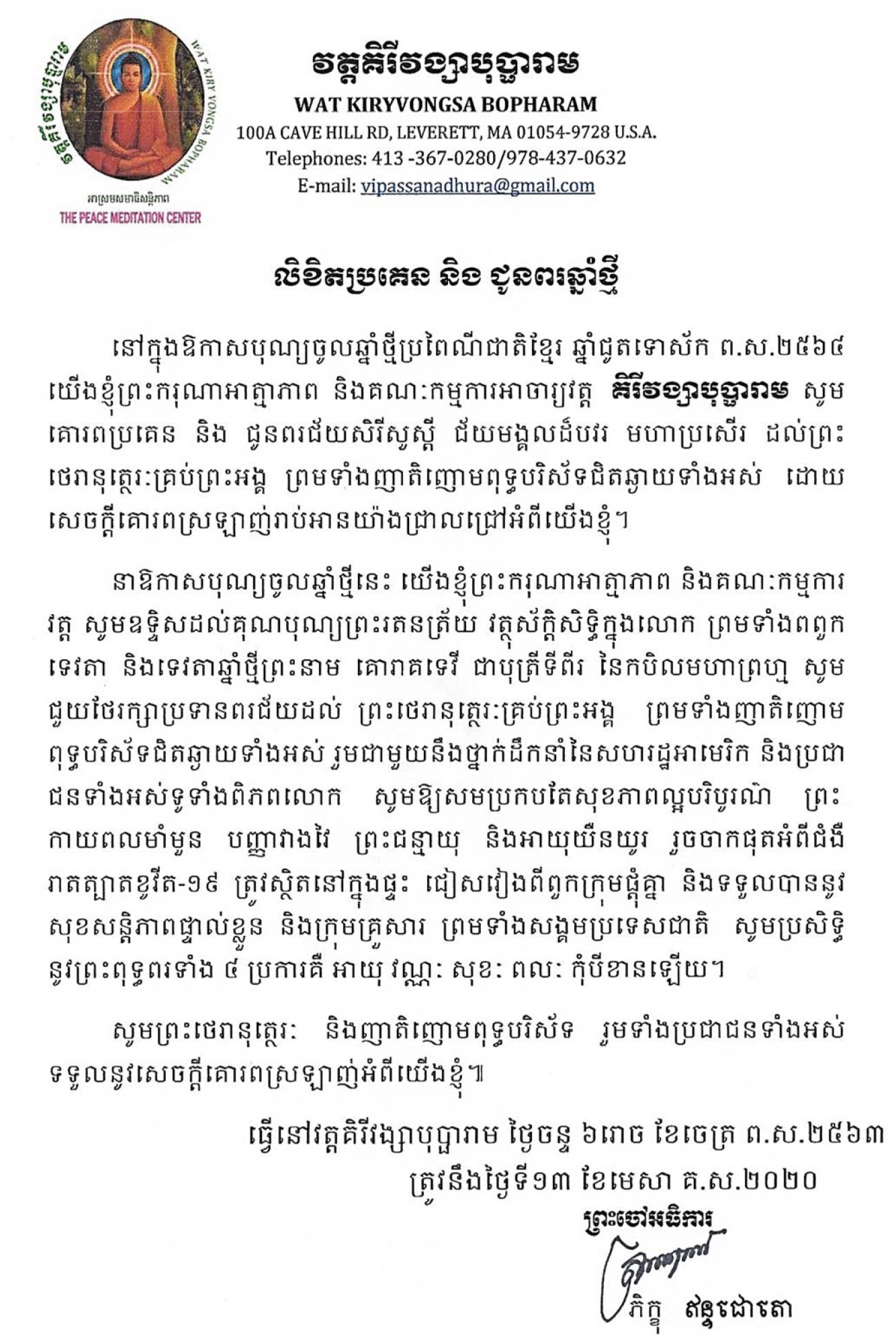
The Kiryvongsa Bopharam Pagoda celebrating New Year on April 14 – 19
វត្តគិរីវង្សាបុប្ផារាម ប្រារព្ធពិធីបុណ្យចូលឆ្នាំខ្មែរ នៅថ្ងៃទី១៤ – ១៩ មេសា
ថ្ងៃសៅរ៍ ១៤រោច ថ្ងៃសីល ខែមាឃ ឆ្នាំកុរ ឯកស័ក ព.ស.២៥៦៣ ត្រូវនឹងថ្ងៃទី២២ ខែកុម្ភៈ គ.ស.២០២០
Saturday the 14th Waning Moon, Holy Day, of Māgha B.E.2563 equivalent to February 22, A.D.2020 Year of the Pig
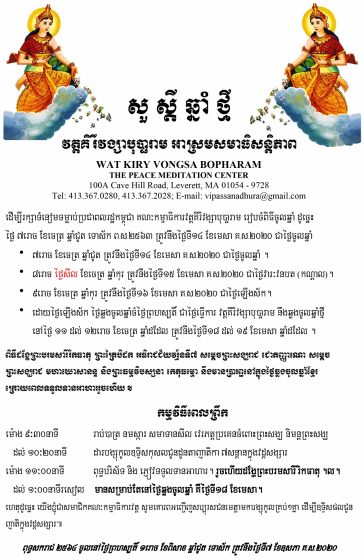
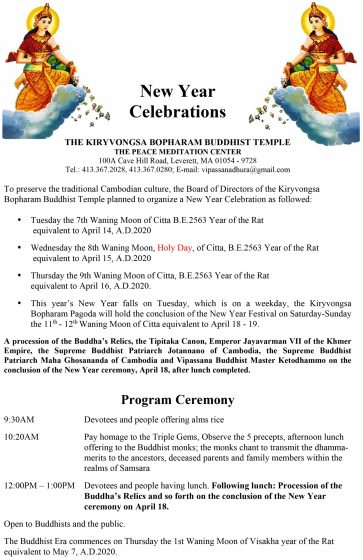
Māgha Pūjā at Wat Kiryvongsa Bopharam on FEB 8, 2563/2020
វត្ដគិរីវង្សាបុប្ផារាម អាស្រមសមាធិសន្ដិភាព បានប្រារព្ធពិធីបុណ្យមាឃបូជា ថ្ងៃសៅរ៍ ១៥កើត ពេញបូណ៌មី ថ្ងៃសីល ឆ្នាំកុរ ឯកស័ក ព.ស.២៥៦៣ ត្រូវនឹងថ្ងៃទី៨ ខែកុម្ភៈ គ.ស.២០២០
The Kiryvongsa Bopharam Pagoda, the Peace Meditation Center observed the Māgha Pūjā on Saturday the 15th Waxing Moon of Māgha, Day of Abstinence, B.E.2563 equivalent to February 8, A.D.2020
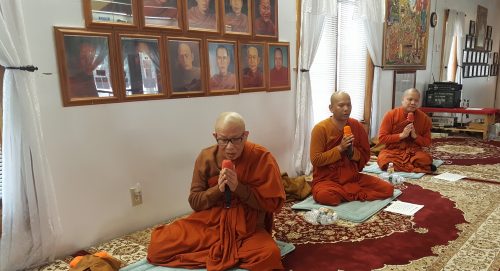
image TempleNews
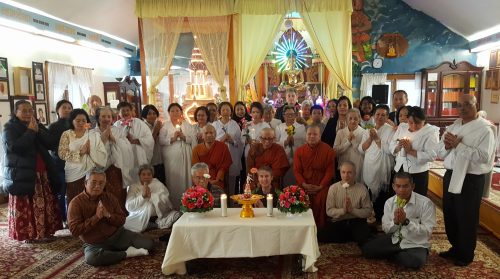
image TempleNews
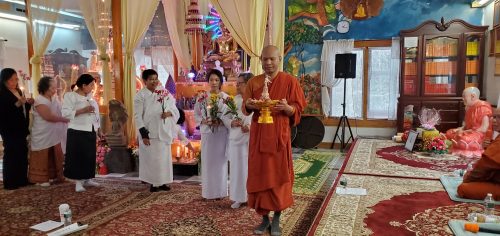
image TempleNews
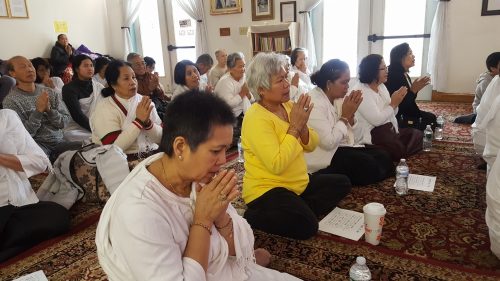
image TempleNews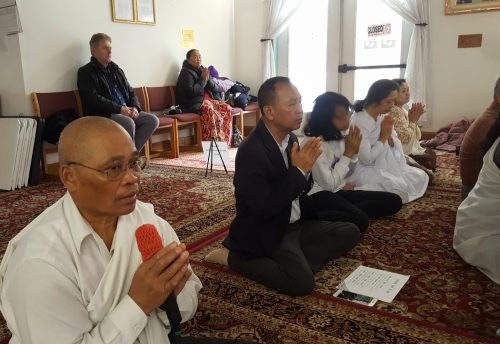
image TempleNews (more…)
Free Copy: The 2564 2020 Khmer Calendar
ប្រតិទិនខ្មែរ ឆ្នាំជូត ទោស័ក ព.ស.២៥៦៤ គ.ស.២០២០ មានប្រគេន និងជូននៅទីនេះដោយមិនគិតថ្លៃ
The Khmer Calendar for B.E.2564 A.D.2020 Year of the Rat is free of charge
ថ្ងៃអាទិត្យ ៤រោច ខែបុស្ស ឆ្នាំកុរ ឯកស័ក ព.ស.២៥៦៣ ត្រូវនឹងថ្ងៃទី២៩ ខែធ្នូ គ.ស.២០១៩
Sunday the 4th Waning Moon of Māgasira B.E.2563 equivalent to December 29, A.D.2019 Year of the Pig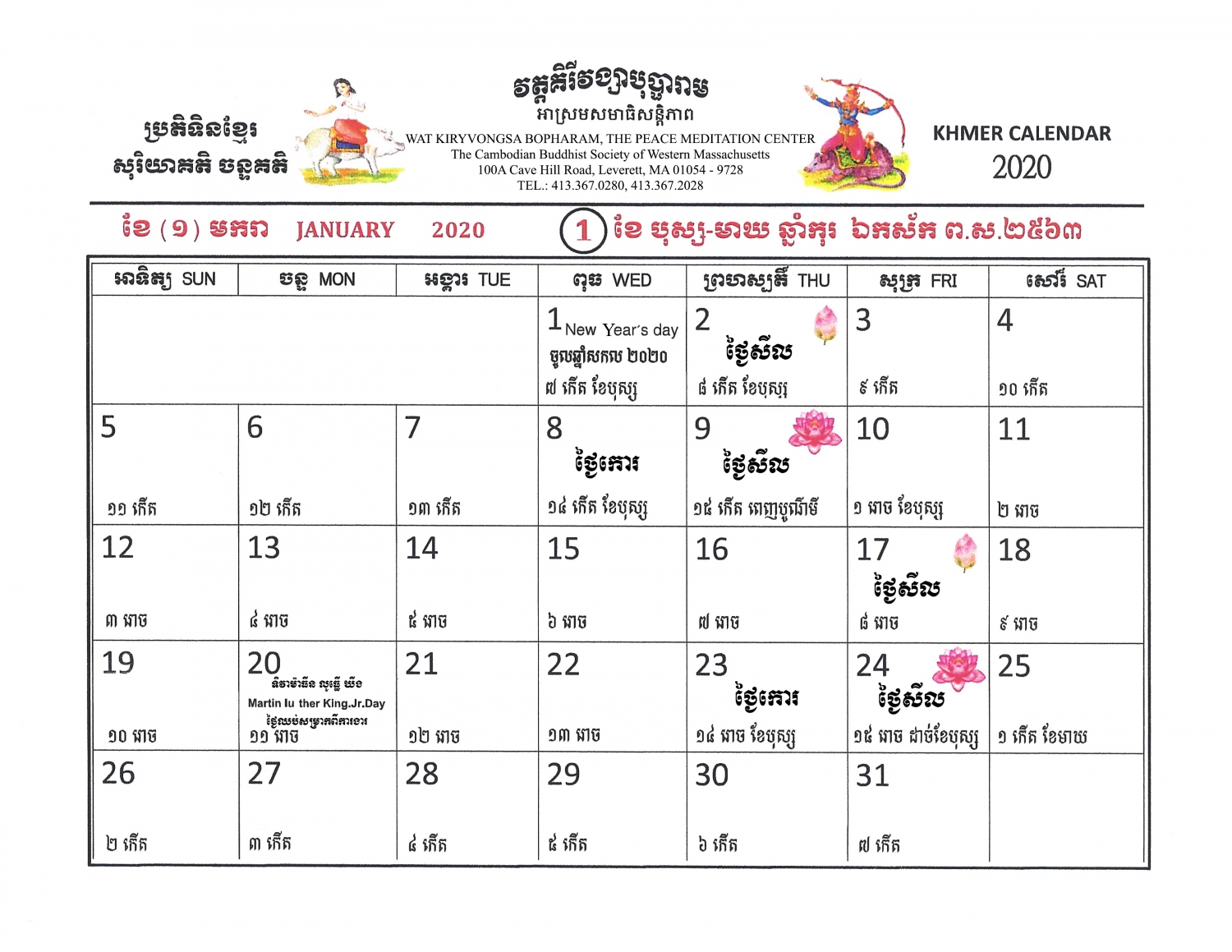
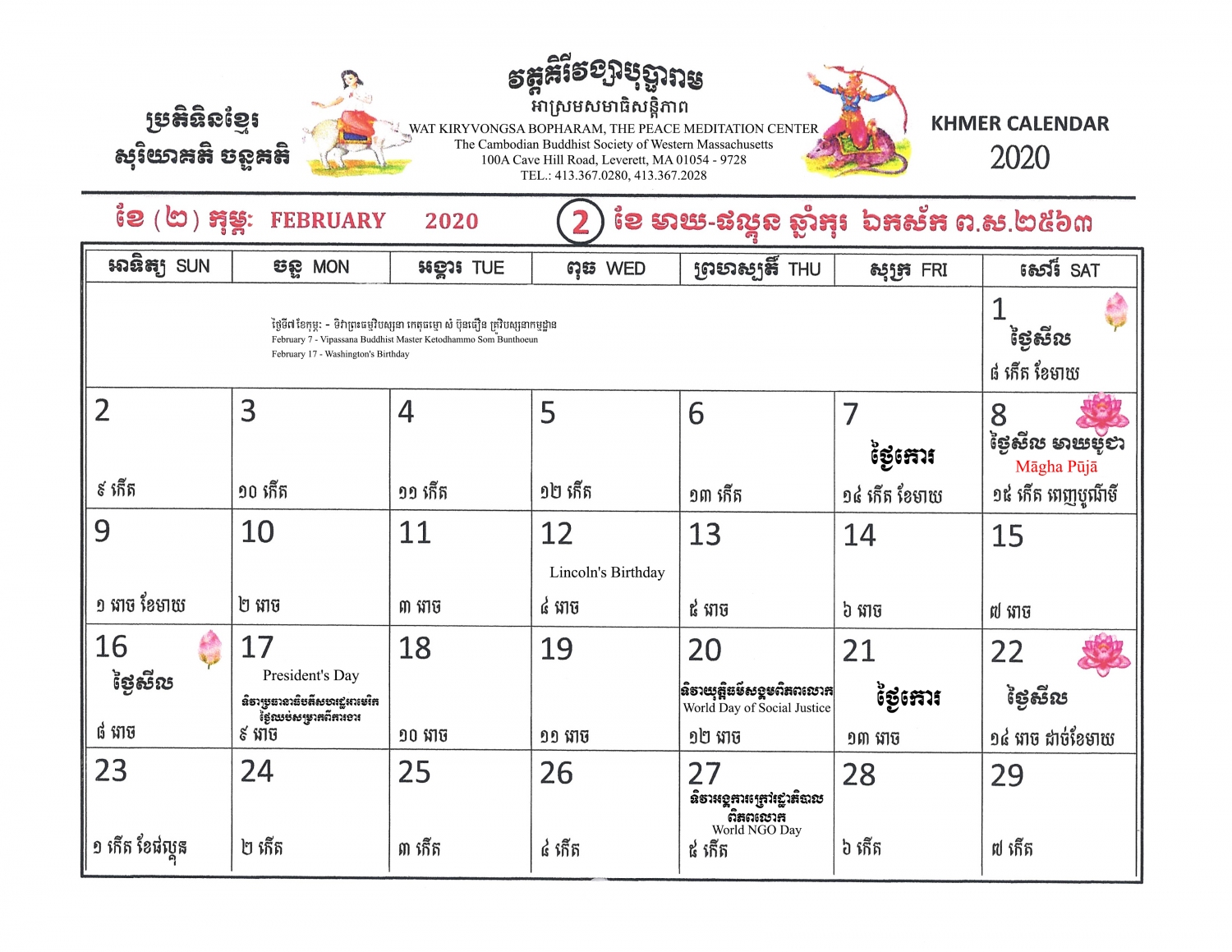
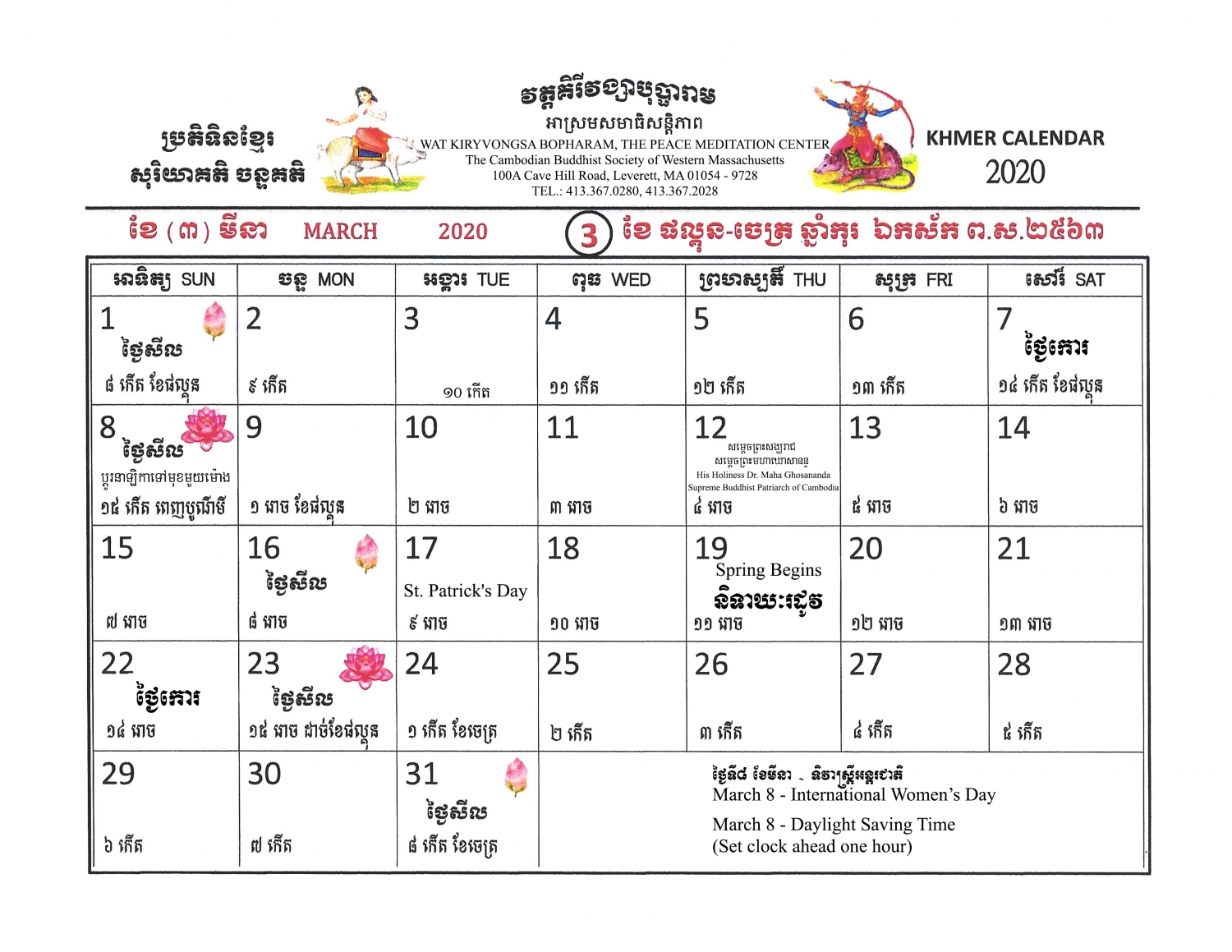
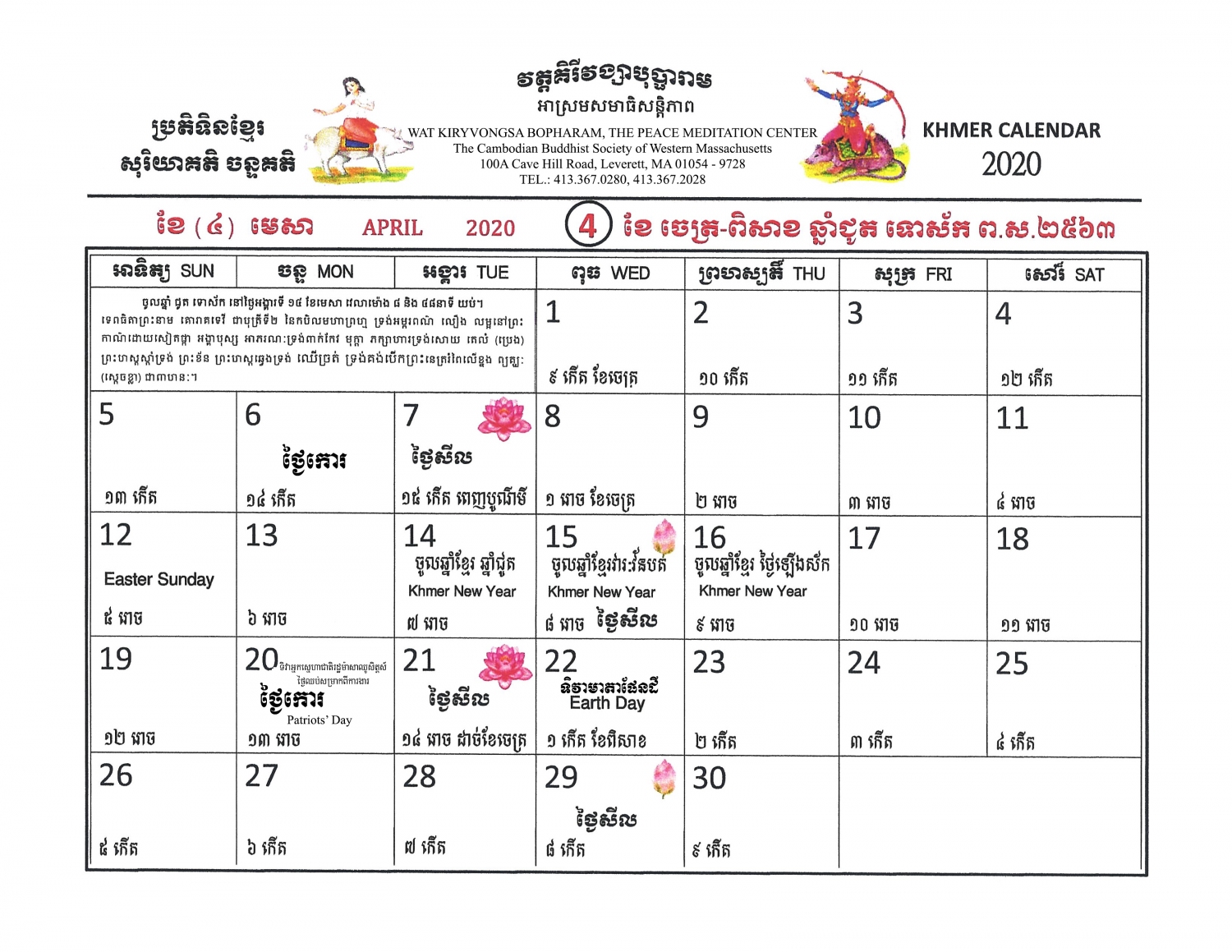
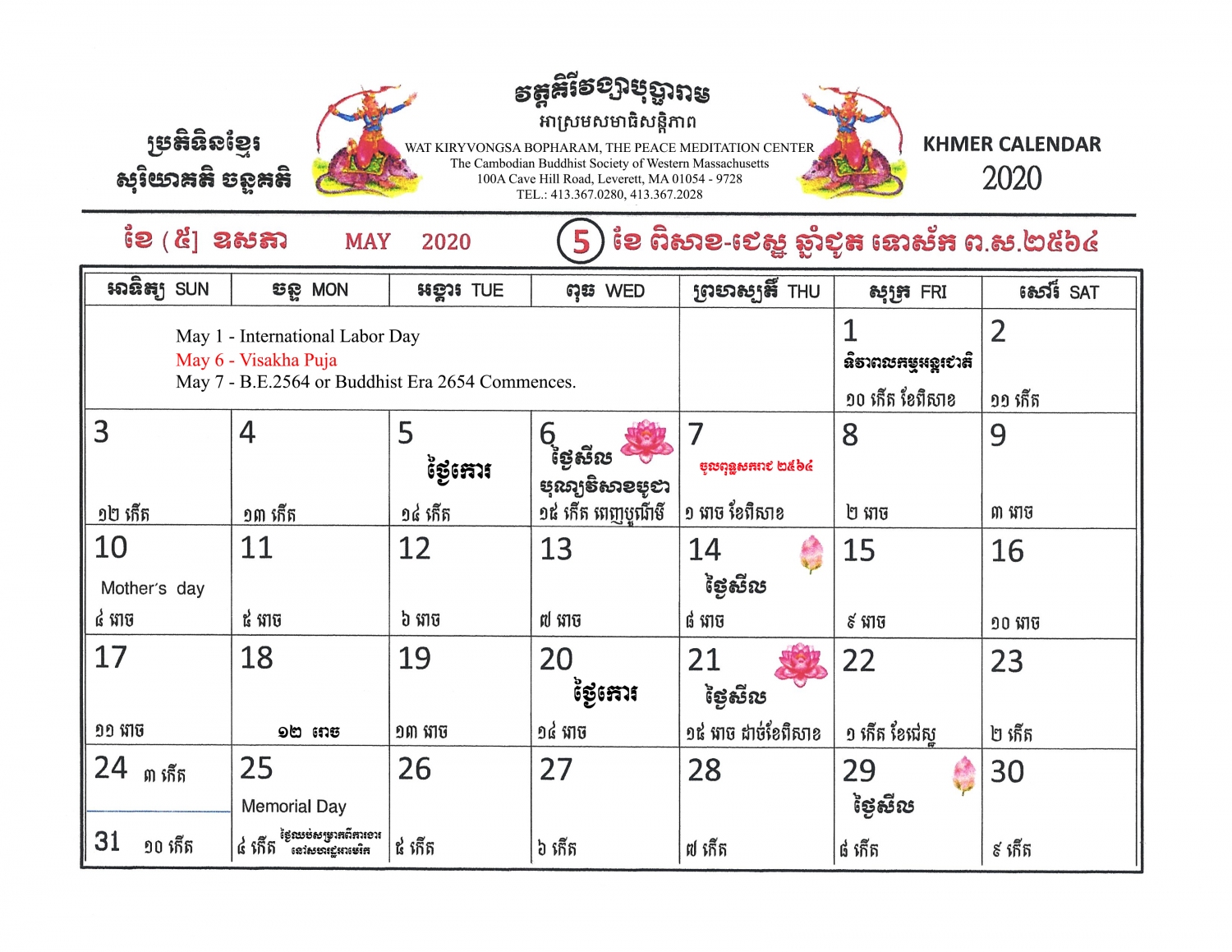
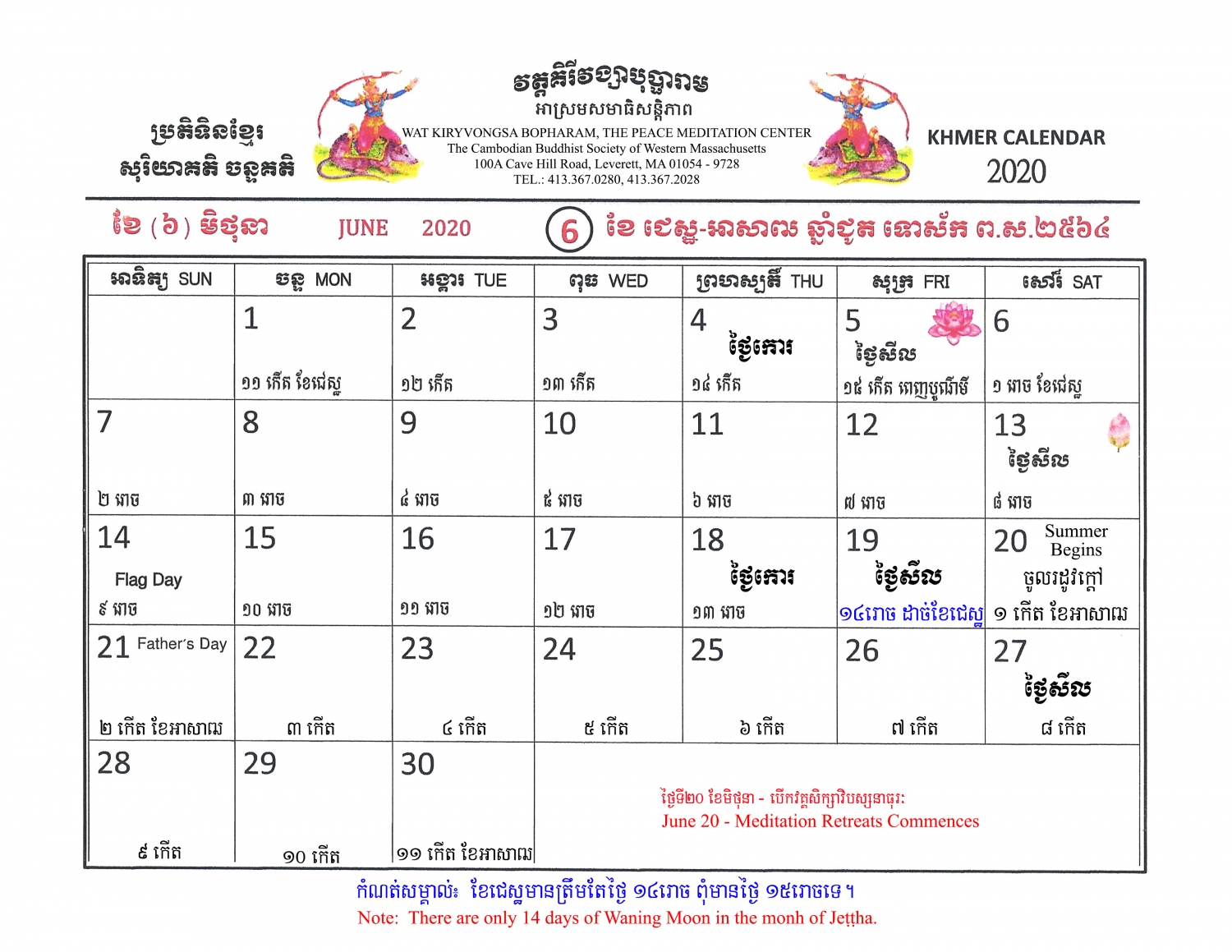
កំណត់សម្គាល់៖ ខែជេស្ឋមានត្រឹមតែថ្ងៃ ១៤រោច ពុំមានថ្ងៃ ១៥រោចទេ។ ប្រសិនបើប្រតិទិនណាដែលមានខែជេស្ឋថាមាន ១៥រោចនោះគឺខុសហើយ។ សូមមេត្ដាជួយកែលម្អតាមចន្ទគតិឲ្យបានត្រឹមត្រូវ នោះចាត់ទុកថាប្រតិបត្ដិតាមព្រះសម្មាសម្ពុទ្ធ និងព្រះអរហន្ដទាំងឡាយ ។ ប្រសិនបើនៅតែមិនប្រតិបត្ដិតាមព្រះសម្មាសម្ពុទ្ធ និងព្រះអរហន្ដទាំងឡាយទេ នោះចាត់ទុកថា អ្នកនោះលើកតម្កើងខ្លួនថាចេះជាងព្រះសម្មាសម្ពុទ្ធ និងព្រះអរហន្ដទាំងឡាយហើយ។ ដូច្នេះតើអាចហៅថាពុទ្ធសាសនិកឬទេ?
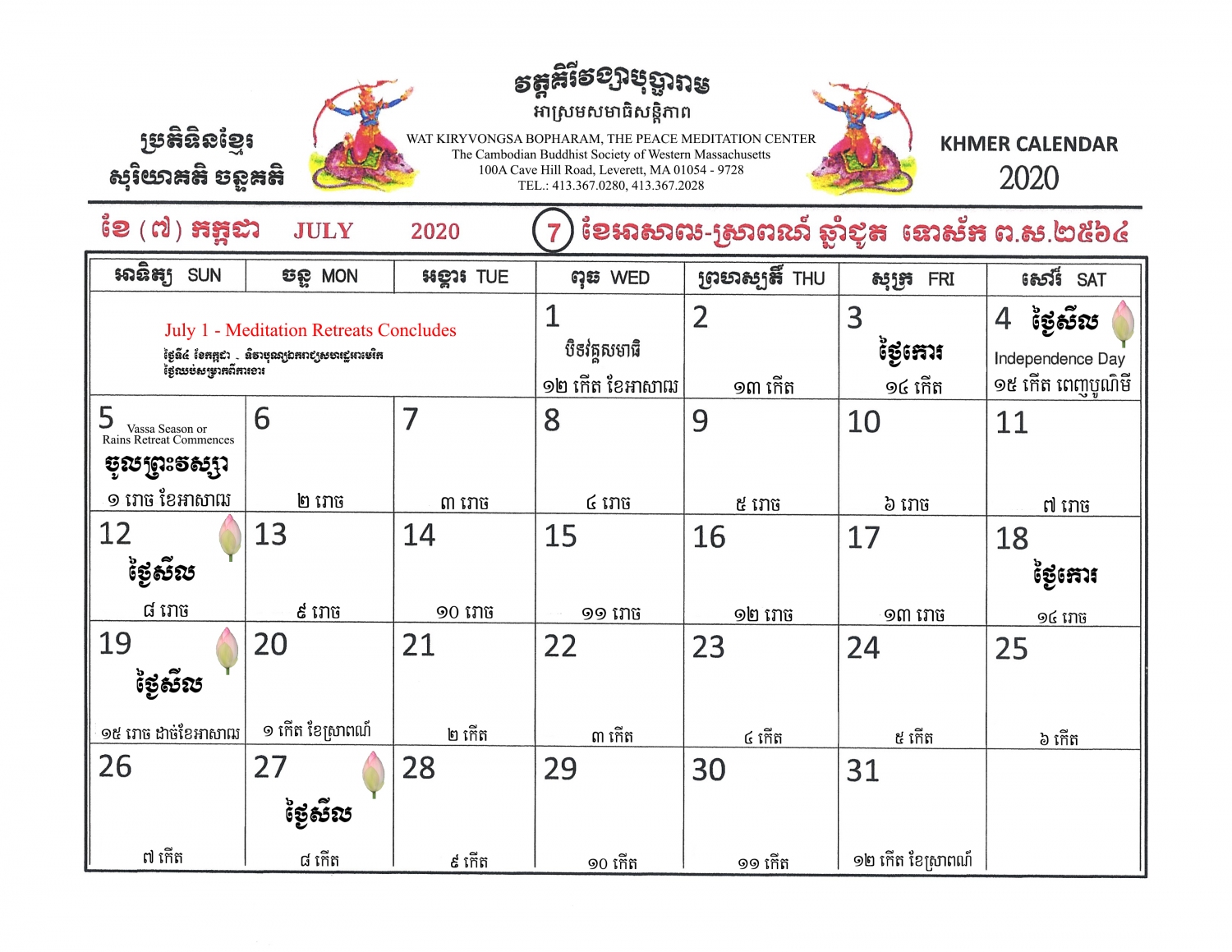
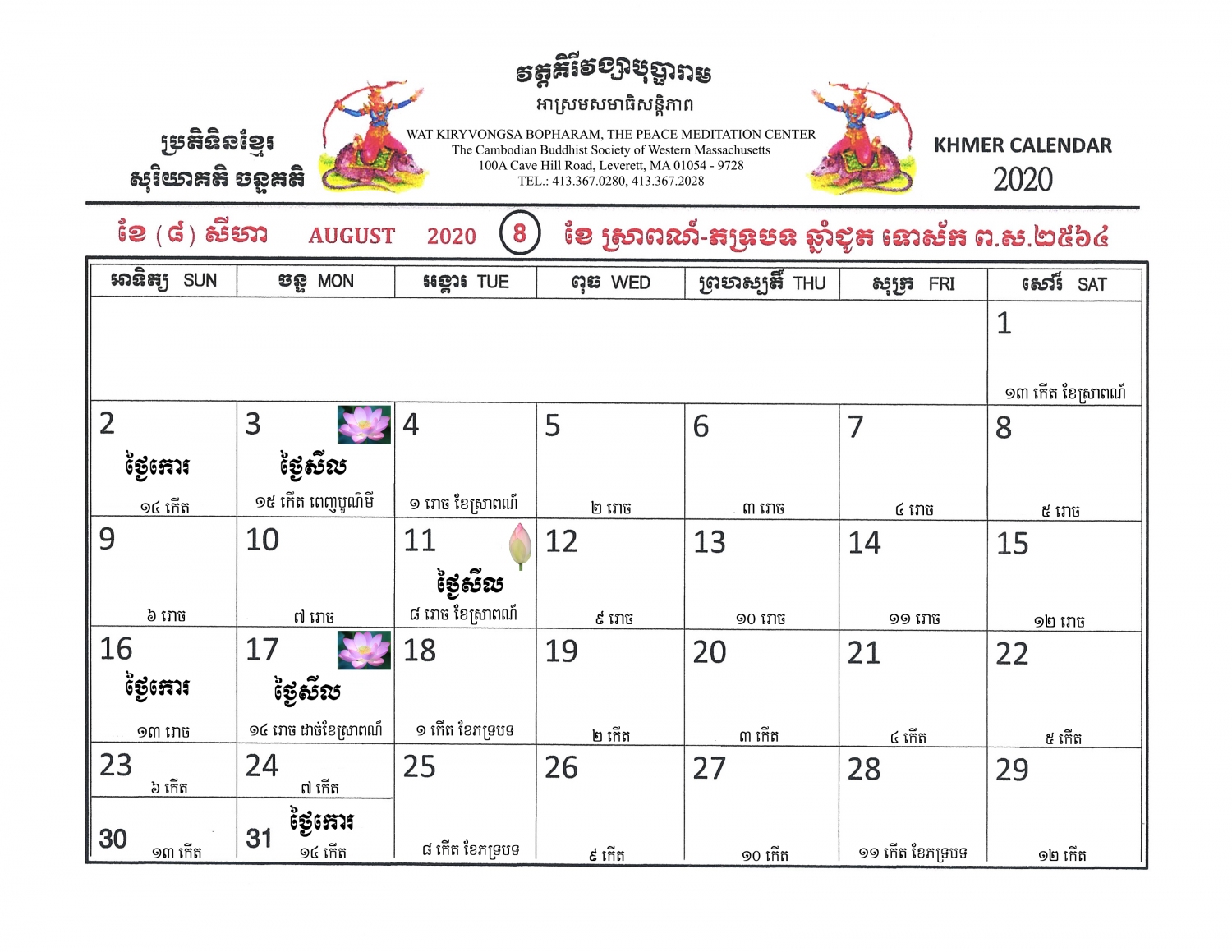
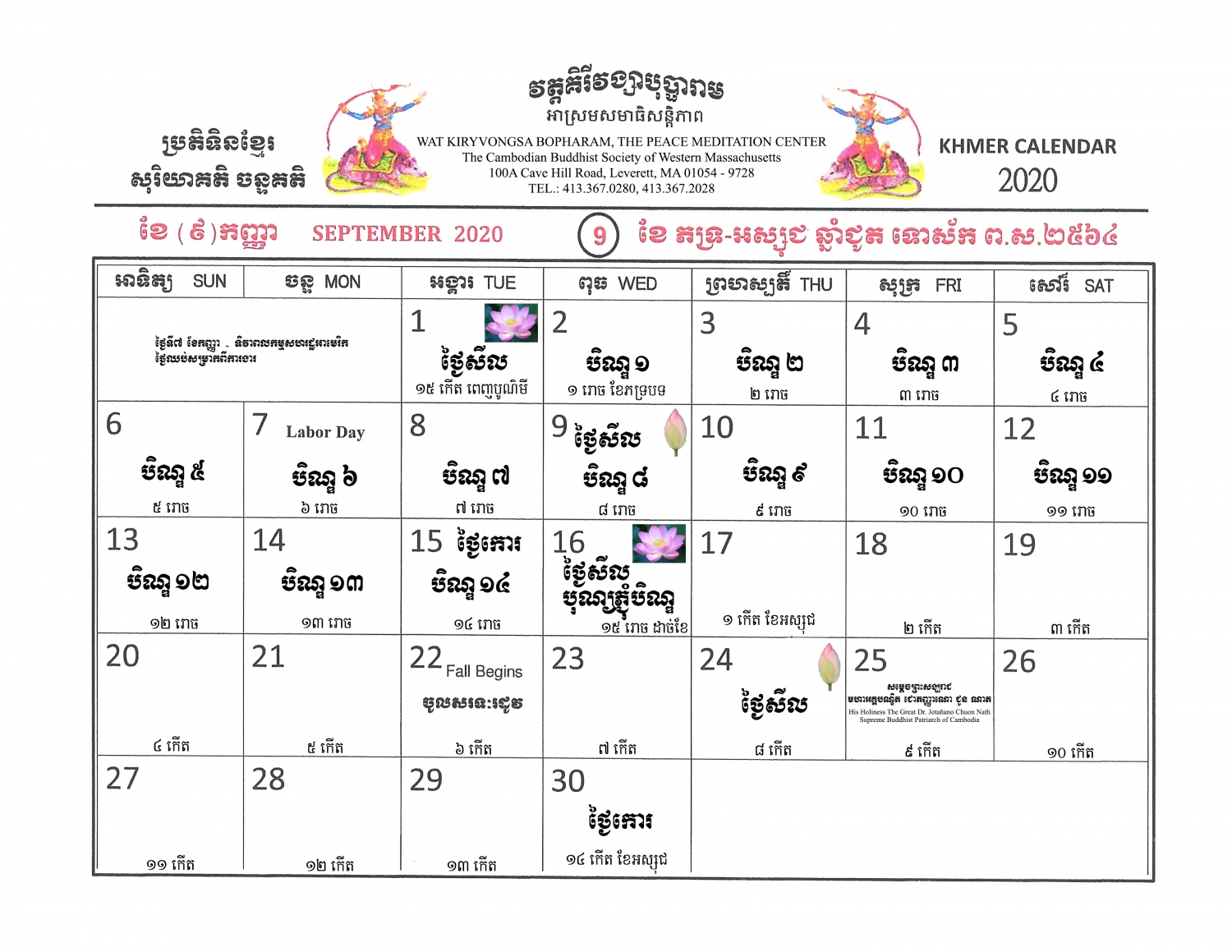
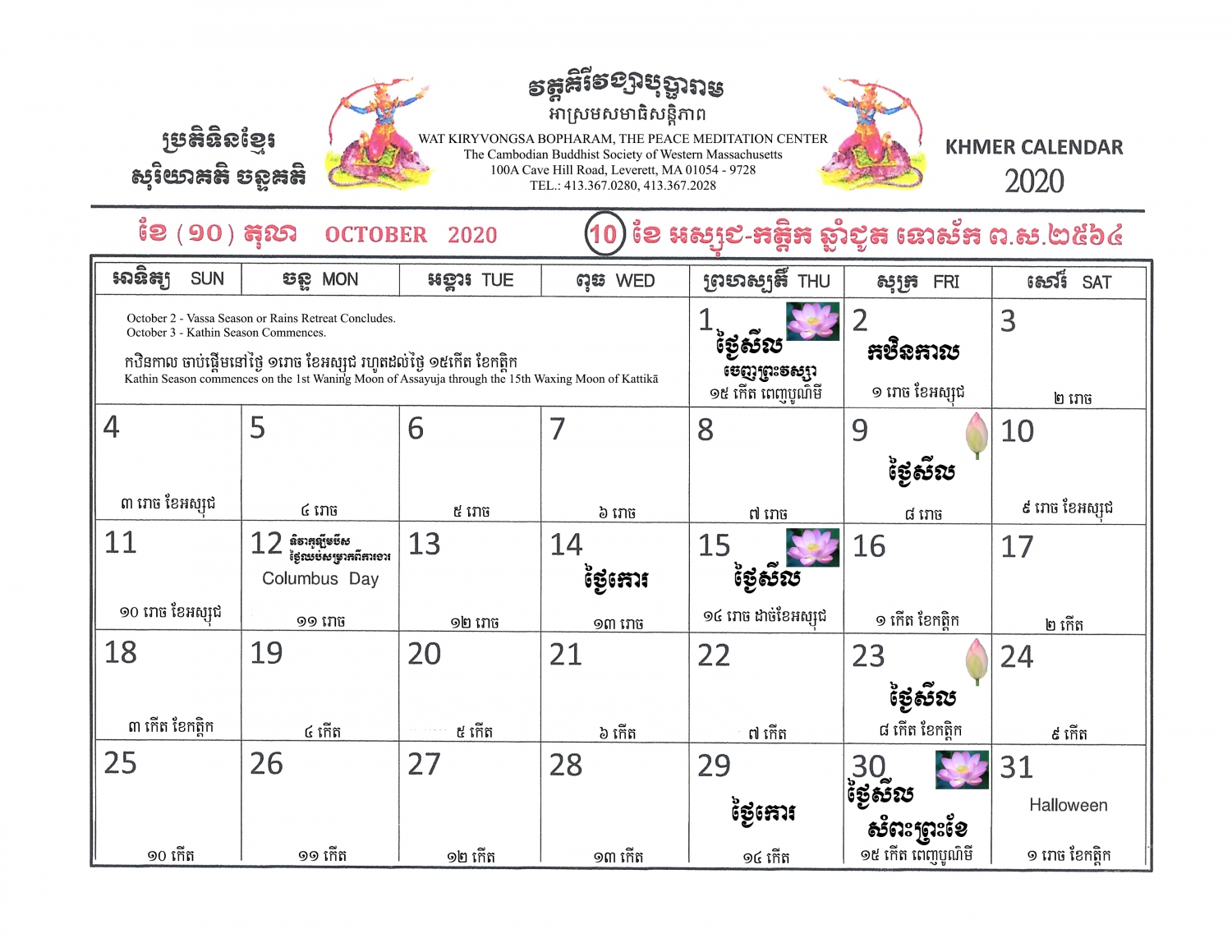
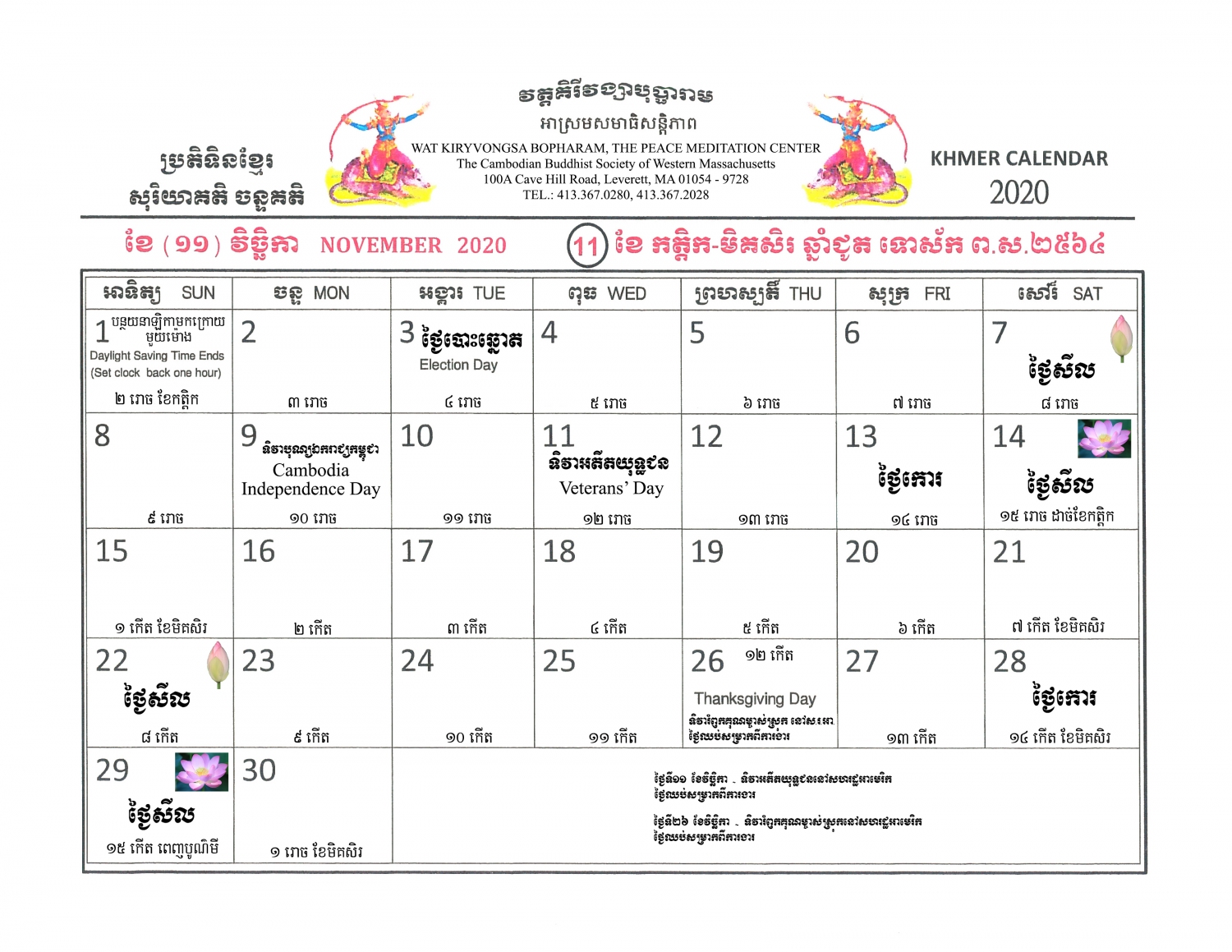
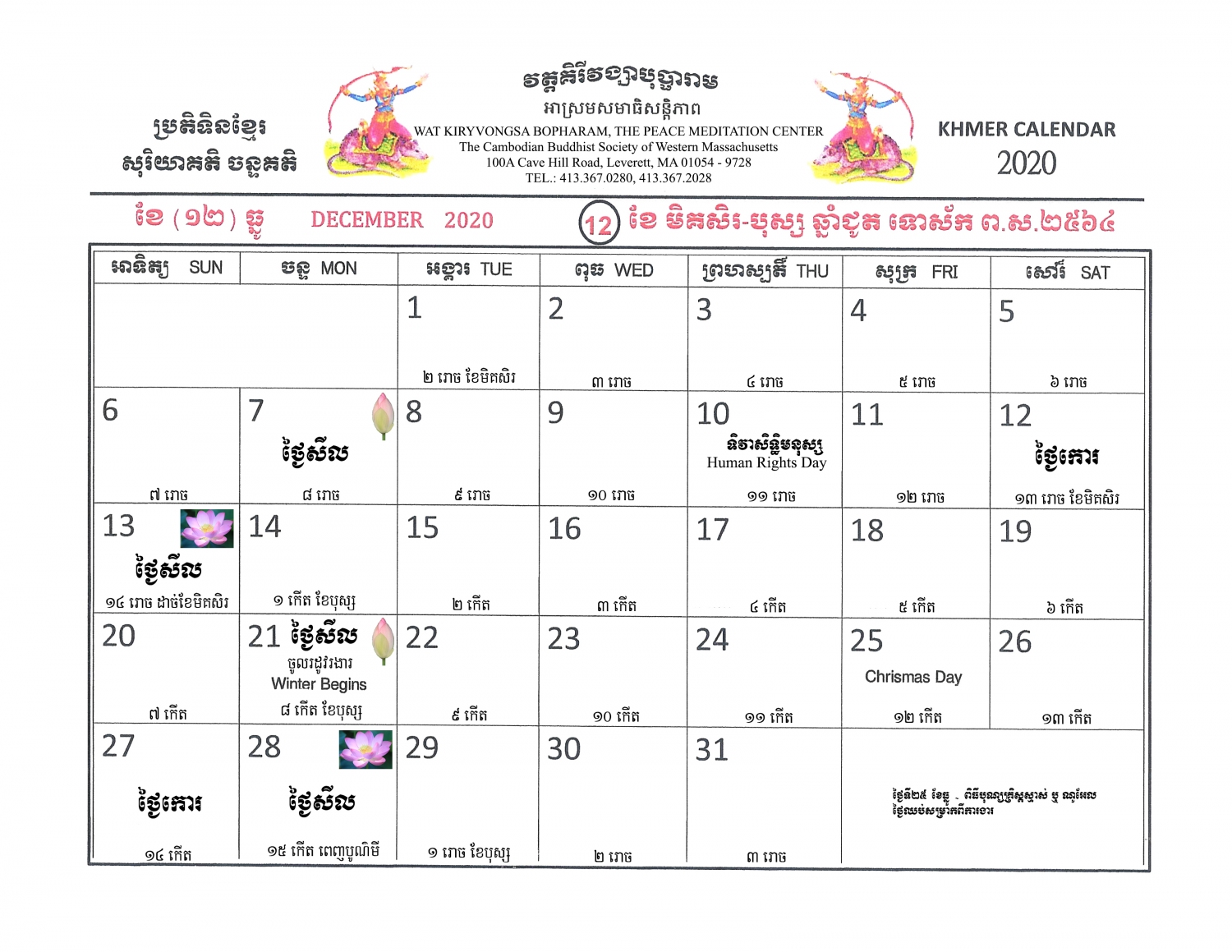
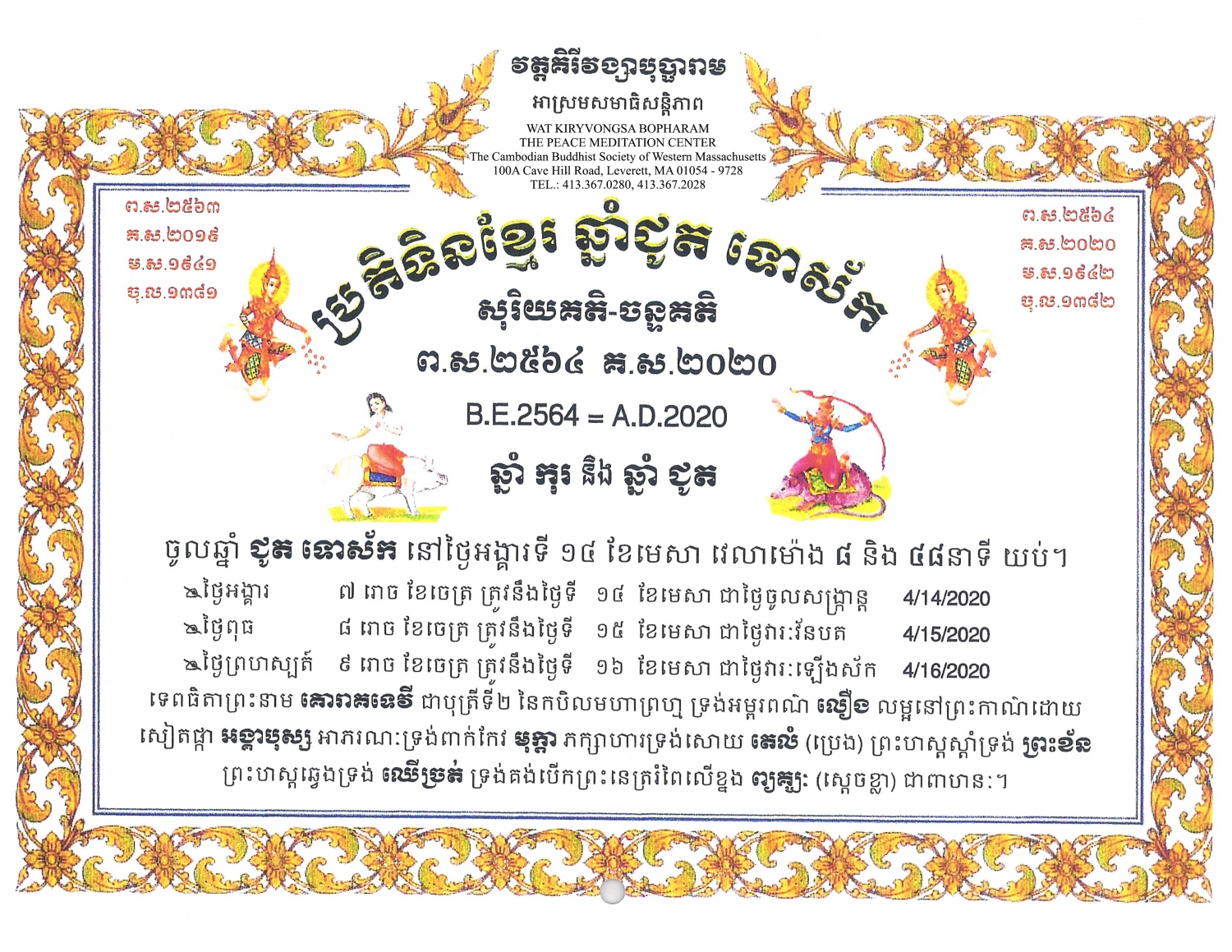
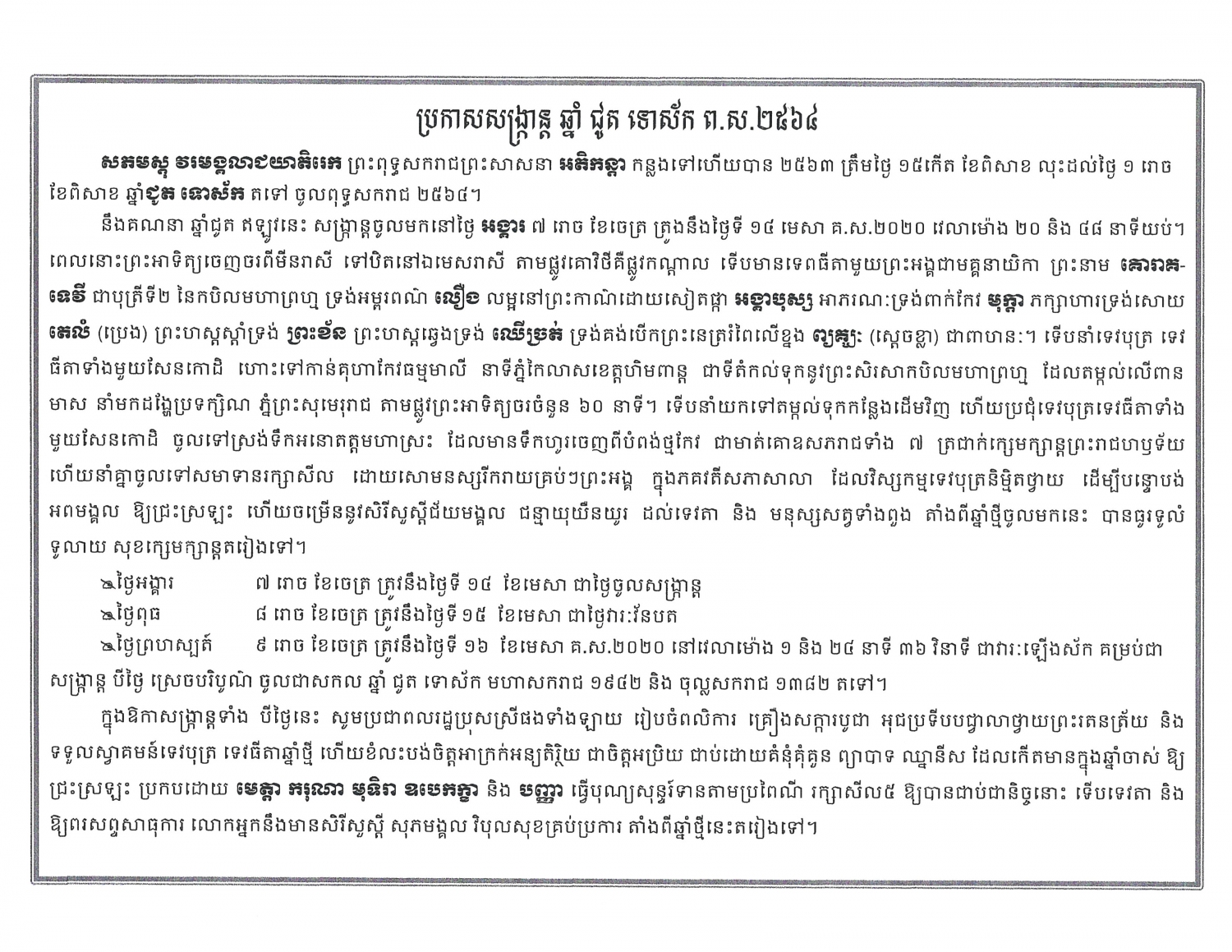
Māgha Pūjā at Wat Kiryvongsa Bopharam on FEB 8, 2563/2020
វត្ដគិរីវង្សាបុប្ផារាម អាស្រមសមាធិសន្ដិភាព នឹងប្រារព្ធពិធីបុណ្យមាឃបូជា ថ្ងៃសៅរ៍ ១៥កើត ពេញបូណ៌មី ថ្ងៃសីល ឆ្នាំកុរ ឯកស័ក ព.ស.២៥៦៣ ត្រូវនឹងថ្ងៃទី៨ ខែកុម្ភៈ គ.ស.២០២០
The Kiryvongsa Bopharam Pagoda, the Peace Meditation Center to observe the Māgha Pūjā on Saturday the 15th Waxing Moon of Māgha, Day of Abstinence, B.E.2563 equivalent to February 8, A.D.2020.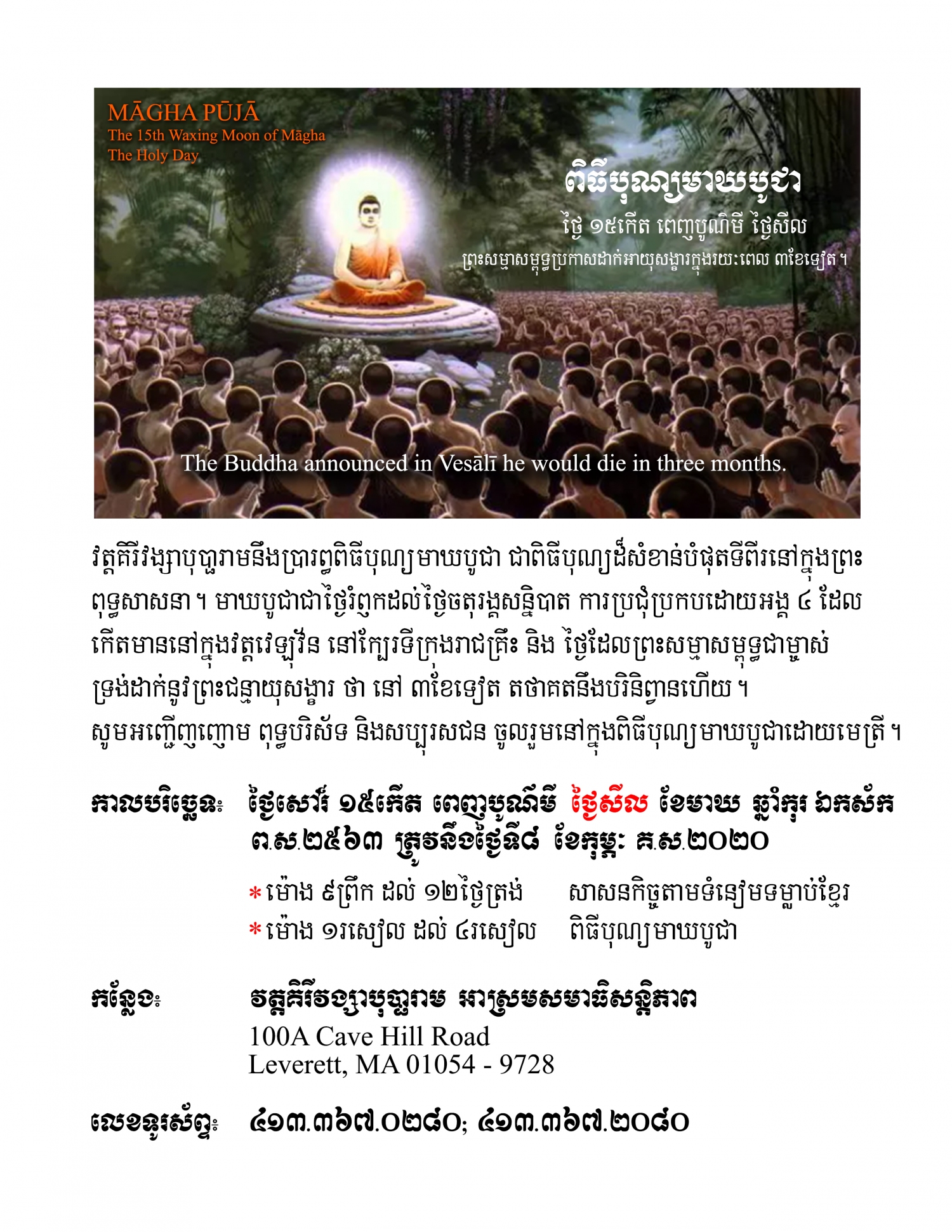
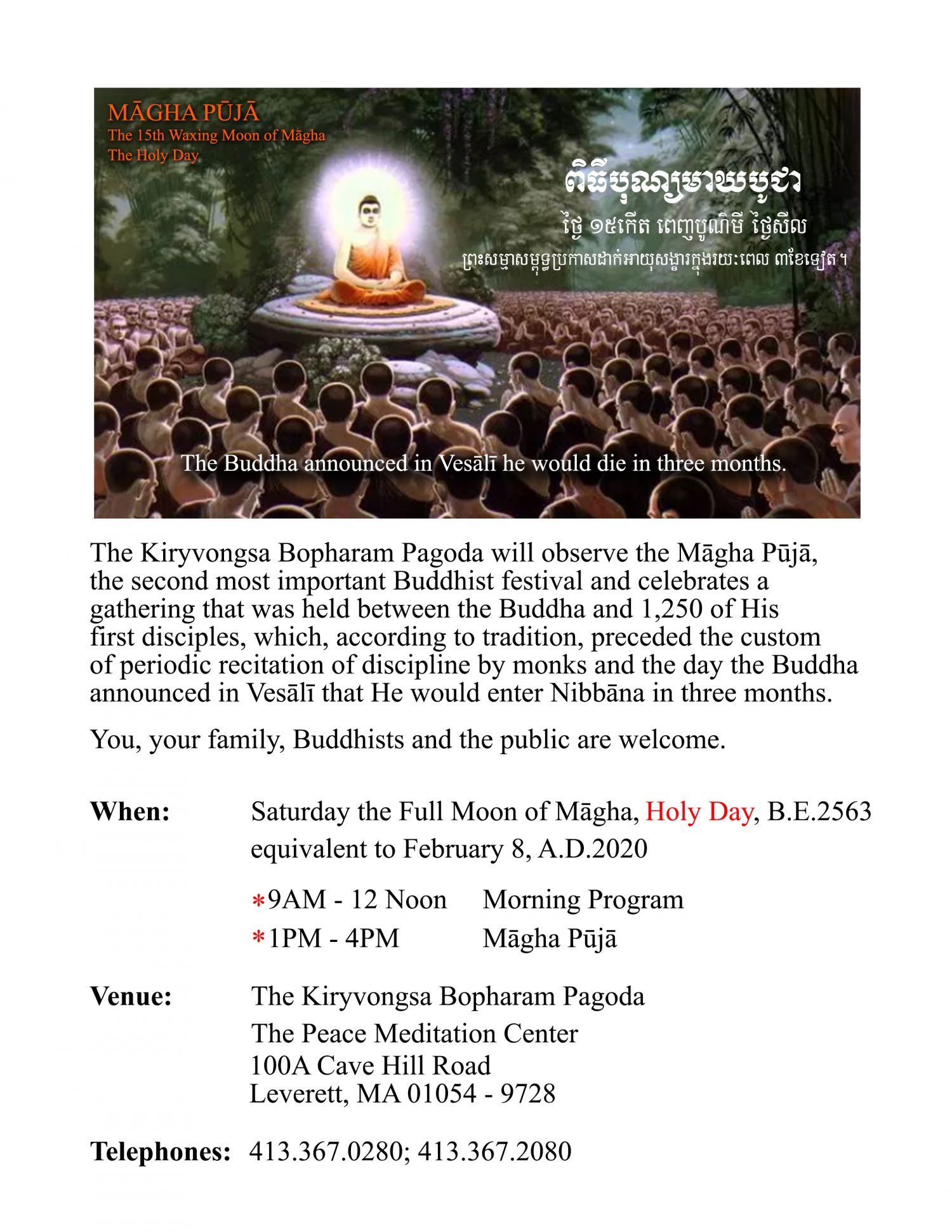
Venue: The Kiryvongsa Bopharam Pagoda, the Peace Meditation Center
100A Cave Hill Road, Leverett, MA 01054 – 9728
Tel.: 413.367.0280, 413.367.2028
Background on មាឃបូជា Māgha Pūjā
Māgha Pūjā is the second most important Buddhist festival, celebrated on the full moon day of the third lunar month in Cambodia, Laos, Thailand, Sri Lanka and on the full moon day of Tabaung in Myanmar. It celebrates a gathering that was held between the Buddha and 1,250 of his first disciples, which, according to tradition, preceded the custom of periodic recitation of discipline by monks. On the day, Buddhists celebrate the creation of an ideal and exemplary community, which is why it is sometimes called Saṅgha Day, the Saṅgha referring to the Buddhist community, and for some Buddhist schools this is specifically the monastic community. In Thailand, the Pāli term Māgha-pūraṇamī is also used for the celebration, meaning ‘to honor on the full moon of the third lunar month’. Finally, some authors have also referred to the day as the Buddhist All Saints Day.
Celebration of Māgha Pūjā is first known of in the modern period, with the institution of it in Thailand, by King Rama IV (A.D.1804 – A.D.1868). It is a public holiday in many Southeast Asian countries and is an occasion when Buddhists go to the temple to perform merit-making activities, such as alms giving, meditation and listening to teachings. It has been proposed as a more spiritual alternative to the celebration of Valentine’s Day.
Māgha is derived from the name of the third month in the traditional Indian lunar calendar, on which the celebration is held. It is also the name of a star, which during this period is close to the full moon. Māgha Pūjā is held on the full moon day. In a leap year, the celebration will be postponed to the full moon day of the fourth lunar month.
Māgha Pūjā day marks an event occurring at the Veḷuvana grove, near Rājagaha (present Rajgir) in northern India, ten months after the enlightenment of the Buddha. The traditional story goes that a meeting is held in the afternoon, that has four characteristics:
1,250 disciples come to see the Buddha that evening without being summoned; These are mostly pupils from the Buddha’s recently converted disciples, such as the three Kassapa brothers, and the monks Sāriputta and Mogallāna.
All of them are Arahants, enlightened disciples;
All have been ordained by the Buddha himself, and therefore are his direct spiritual descendants;
It is the full-moon day of the third lunar month.
Because of these four factors, Māgha Pūjā is also known as the Fourfold Assembly Day. On this occasion, the Buddha teaches those arahants a summary of Buddhism, called the Ovādapatimokkha. In these, three principles are given:
“The non-doing of evil / the full performance of what is wholesome / the total purification of the mind.”
This is followed by a formulation of Buddhist ideals:
“Patience (and) forbearance are the highest austerity. The awakened ones say nibbāna is the highest. One is certainly not a wanderer if one injures others; one is not an ascetic if one harms another.”
Finally, the last stanza is about the path of religious practice:
“Not abusing, not injuring, and restraint under the rules of discipline, and knowing moderation in eating, and secluded lodgings, and exertion in respect of higher thought, this is the teaching of the awakened ones.”
According to the traditional Pāli commentaries, the Buddha continued to teach this summary for a period of twenty years, after which the custom was replaced by the recitation of the monastic code of discipline by the Saṅgha themselves. On Māgha Pūjā, Buddhists celebrate the creation of an ideal and exemplary community.
Māgha Pūjā is also the day that the Buddha is believed to have announced in Vesālī he would die in three months, after which a miraculous earthquake followed. Moreover, in Sri Lanka, it is considered the day that the Buddha appointed his two main disciples, the monks Sāriputta and Moggallāna. Apart from the religious meaning, Māgha Pūjā also reflects the Southeast Asian agricultural year, as it is celebrated after the harvest.
It is unknown how traditional Buddhist societies celebrated this event in pre-modern times, but in Thailand, the first known instance was during the reign of the Thai king Rama IV (1804–68), who instituted it. He first held it in the palace only. In the evening, 31 monks would recite the Ovādapatimokkha, lit lanterns around the ubosot (ordination hall), and give a sermon about the same Ovādapatimokkha. A recitation text used for this occasion is attributed to Rama IV. Rama IV’s successor Rama V (A.D.1853 – A.D.1910) expanded the practice and organized it as a national celebration in the Temple of the Emerald Buddha. From Thailand, the practice spread to neighboring countries. Already in A.D. 1937, the ceremony was widely held and observed in Thailand.
Māgha Pūjā is a day that laypeople make merit. Monastics and devotees will hold processions, light candles, and make offerings. Māgha Pūjā is celebrated most extensively in Cambodia and Thailand, but it is a national holiday in most Southeast Asian countries, such as Laos, Myanmar and Cambodia.
In Thailand, Māgha Pūjā was instituted by Rama IV. It is currently designated as a national holiday, on which sale of alcohol is strictly prohibited. On the evening of Māgha Pūjā, most temples in Thailand hold a candlelight procession. Furthermore, people will make merit by going to temples and by joining in with activities, such as listening to teachings, giving alms, etc. At times, special events are also held, such as a recital of the entire Buddhist scriptures and ceremonies for avowing oneself as a Buddhist lay person. In A.D.2006, the government of Thailand made an announcement that Māgha Pūjā should be celebrated as a “national day of gratitude.” Māgha Pūja was therefore presented as a day of spiritual love and gratitude instead.
In Sri Lanka and Cambodia, Māgha Pūjā is also observed. In Chinese communities, as well as in Myanmar, a similar festival as Māgha Pūjā is observed. The Burmese people celebrate this on the full moon of the month Tabaung according to their traditional calendar. Fifteen days before this full moon day, a Shwedagon Pagoda Festival is held, on which a ceremony is held for offerings to the 28 Buddhas (from Taṇhaṅkara to Gotama Buddha), followed by a 10-day, continuous recital of Buddhist texts. Burmese devotees make merits and meditate during this period.
Māgha Pūjā has also become a popular event among Western Buddhist converts in the West. Wikipedia
ផ្សាយនៅថ្ងៃចន្ទ ១២រោច ខែមិគសិរ ឆ្នាំកុរ ឯកស័ក ព.ស.២៥៦៣ ត្រូវនឹងថ្ងៃទី២៣ ខែធ្នូ គ.ស.២០១៩
Monday the 12th Waning Moon of Māgasira B.E.2563 equivalent to December 23, A.D.2019 Year of the Pig
New Restroom at Wat Kiryvongsa Bopharam
បង្គន់អនាម័យសម្រាប់ស្រ្ដីនៅវត្ដគិរីវង្សាបុប្ផារាម អាស្រមសមាធិសន្ដិភាព
New Women’s Restroom at Wat Kiryvongsa Bopharam, the Peace Meditation Center
ថ្ងៃអាទិត្យ ៤រោច ខែមិគសិរ ឆ្នាំកុរ ឯកស័ក ព.ស.២៥៦៣ ត្រូវនឹងថ្ងៃទី១៥ ខែធ្នូ គ.ស.២០១៩
Sunday the 4th Waning Moon of Māgasira B.E.2563 equivalent to December 15, A.D.2019 Year of the Pig
A 10-Day Meditation Retreats in Leverett, Massachusetts
រៀនធ្វើសមាធិ វិបស្សនា និងអប់រំចិត្ត
INTERESTED IN LEARNING MEDITATION
A 10-Day Meditation (Samadhi) & Vipassana (Insight Meditation) Retreats
ថ្ងៃព្រហស្បតិ៍ ១រោច ខែមិគសិរ ឆ្នាំកុរ ឯកស័ក ព.ស.២៥៦៣ ត្រូវនឹងថ្ងៃទី១២ ខែធ្នូ គ.ស.២០១៩
Thursday the 1st Waning Moon of Māgasira B.E.2563, December 12, A.D.2019 Year of the Pig
When: JUN 20 – JUL 01, B.E.2564 A.D.2020
Location: The Kiryvongsa Bopharam Pagoda, the Peace Meditation Center, Leverett, Massachusetts United States
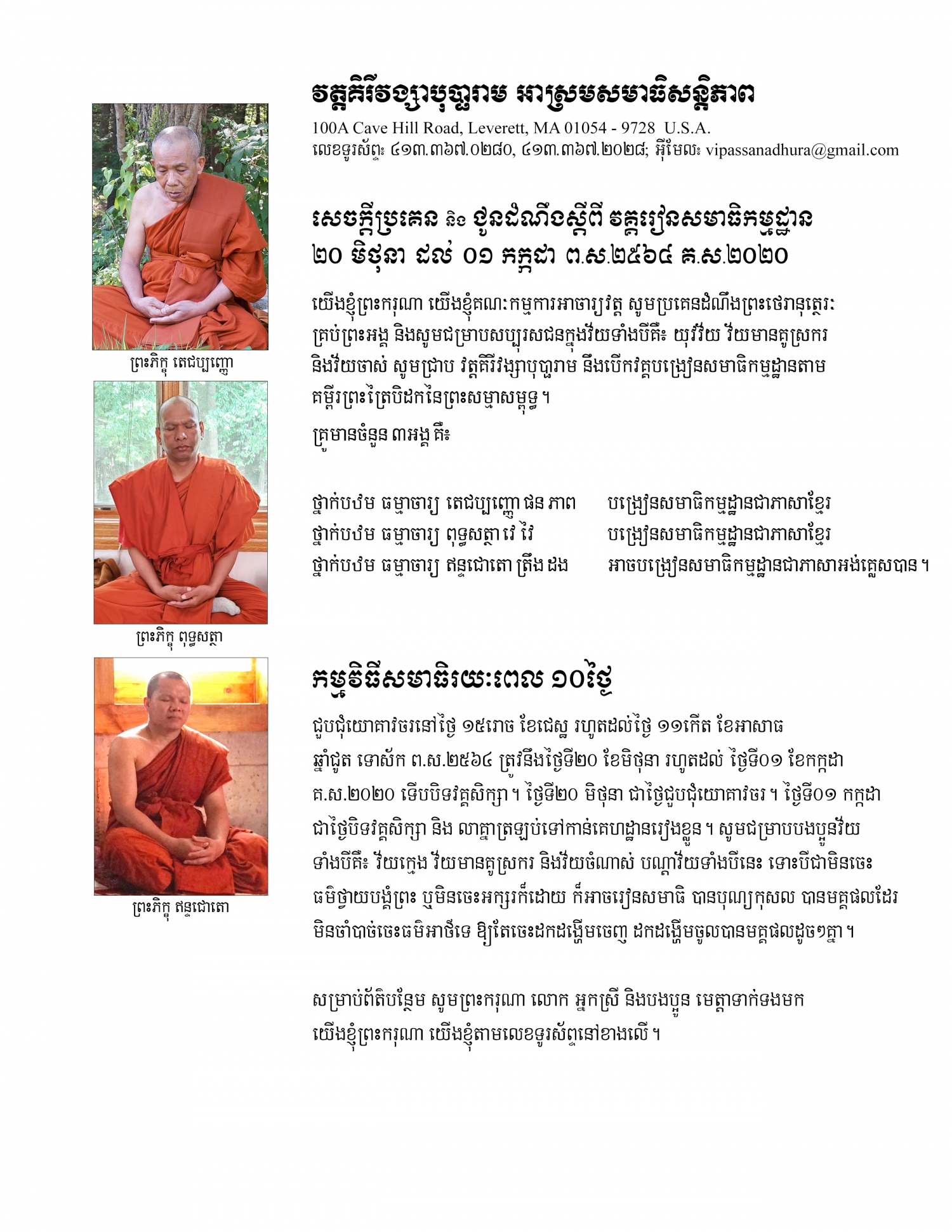
Vipassana and meditation teachers are: Bhikkhu Dejapanno, Bhikkhu Buddhasaddha, Bhikkhu Indajoto.
The meditation technique is taught strictly in accordance to the Buddhist Tipitaka (The Buddhist Canon).
To learn more about last year’s program. Click on hyperlink.
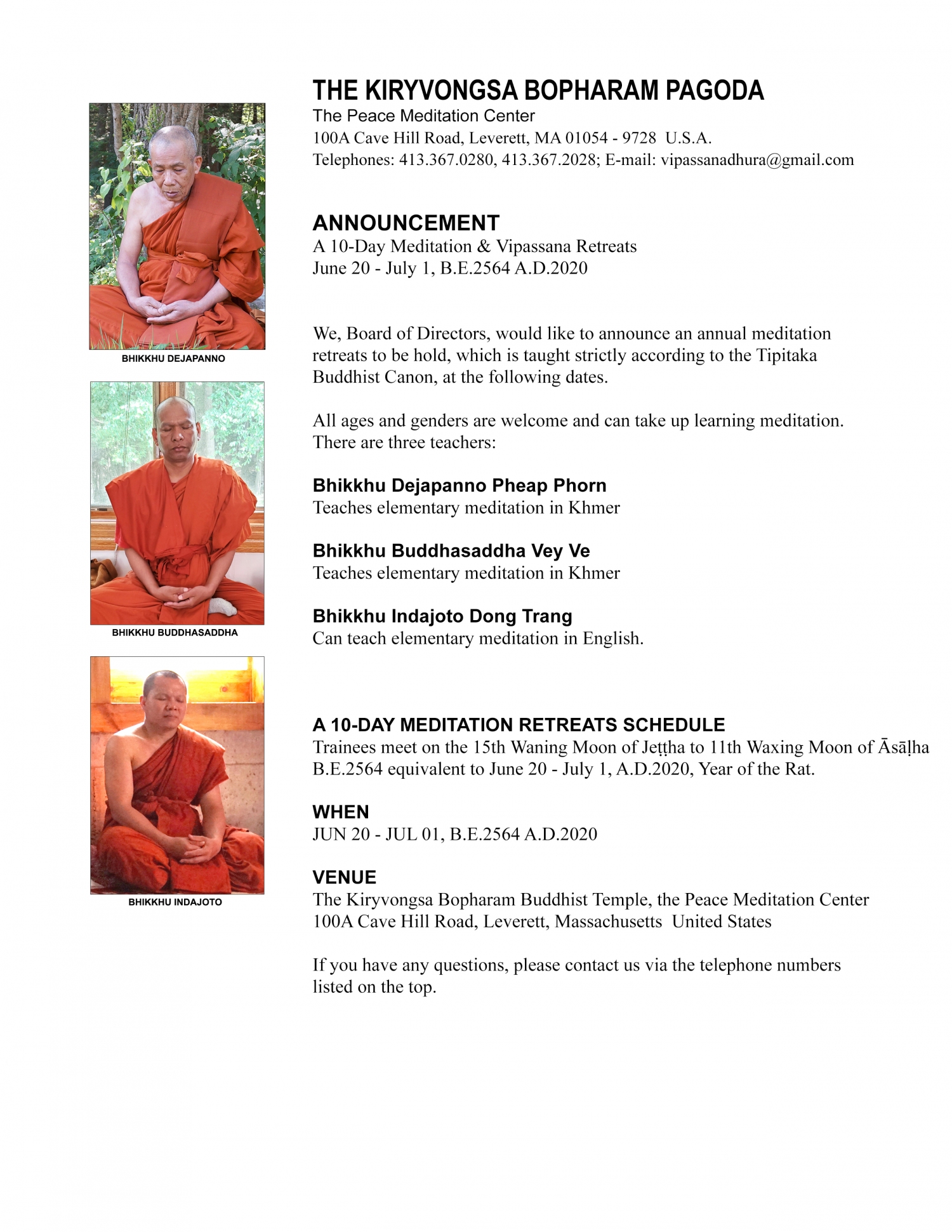
Modes of Transportation
By Air: You are suggested to stop at Bradley International Airport in Connecticut. It is a 1-hour drive to the temple.
By Land: You are suggested to stop in Amherst bus station if you arrive by bus from out of state or Canada. It is about a 25-minute drive to the temple.
Please DOWNLOAD PROGRAM and REGISTRATION FORM. Complete the registration form and send it back as soon as possible.
Download Khmer PDF: Registration2564
Download English PDF: RegistrationEN2564
Contact Info:
The Kiryvongsa Bopharam Pagoda, the Peace Meditation Center
100A Cave Hill Road, Leverett, MA 01054 – 9728 U.S.A.
Tel.: 413.367.0280, 413.367.2028
Advance ENROLLMENT opens
Kathin Ceremony at Wat Kiryvongsa Bopharam on October 26-27, 2563/2019
ពិធីបុណ្យកឋិនទាន ប្រារព្ធនៅវត្ដគិរីវង្សាបុប្ផារាម អាស្រមសមាធិសន្ដិភាព ទីក្រុងឡេវវើរ៉េត រដ្ឋម៉ាសាឈូសិត្ដស៍ សហរដ្ឋអាមេរិក ថ្ងៃ ១៣ – ១៤រោច ខែអស្សុជ ឆ្នាំកុរ ឯកស័ក ព.ស.២៥៦៣ ត្រូវនឹងថ្ងៃទី២៦ – ២៧ ខែតុលា គ.ស.២០១៩
មានប្រវត្ដិកឋិនសង្ខេបជាភាសាជាតិខ្មែរ។
Kathin Ceremony held at the Kiryvongsa Bopharam Pagoda, the Peace Meditation Center, Leverett, Massachusetts United States of America on the 13th – 14th Waning Moon of Assayuja , Year of the Pig, B.E.2563 equivalent to October 26 – 27, A.D.2019. Brief Kathin History included.
MEDITATION DOCUMENTARIES
DHAMMA TALK BY VEN. KETODHAMMO
ព្រះធម្មទេសនាសំដែងដោយ ព្រះធម្មវិបស្សនា កេតុធម្មោ សំ ប៊ុនធឿន
Dhamma talk by the late and renowned Cambodian Vipassana Buddhist Master Ven. Ketodhammo Som Bunthoeun.
TEMPLENEWS TV SHOWS
Watch our shows on LTC – Channel 95
Broadcast hours | Fridays: 4 – 5 pm, 8 – 9 pm
Tuesdays 11 am - 12 pm
Email: templenewscast@yahoo.com
Phone: 978.853.9623
Website: templenews.org
Youtube: www.youtube.com/templenewstv
To find out more, including how to control cookies, see here: Cookie Policy
